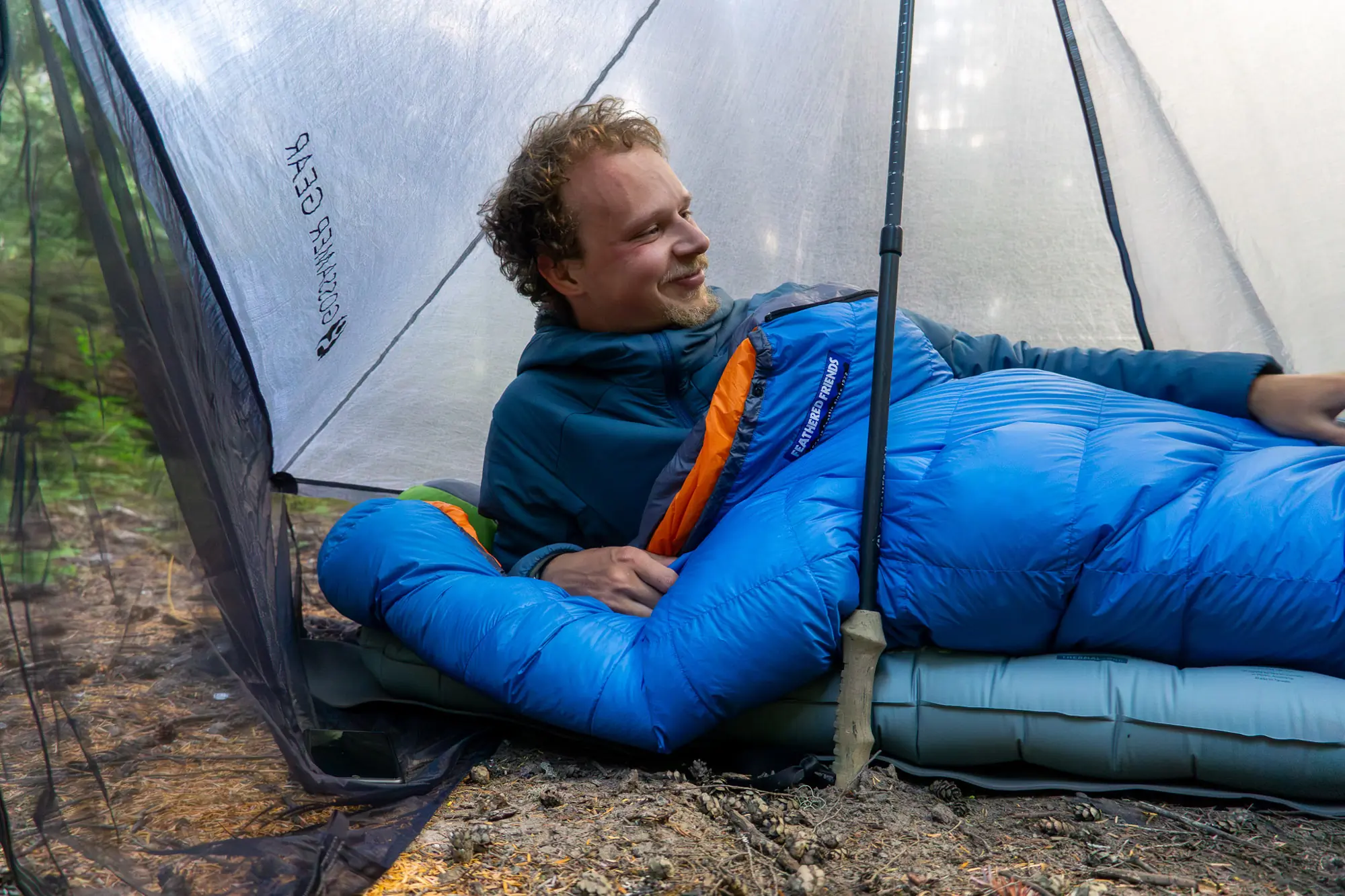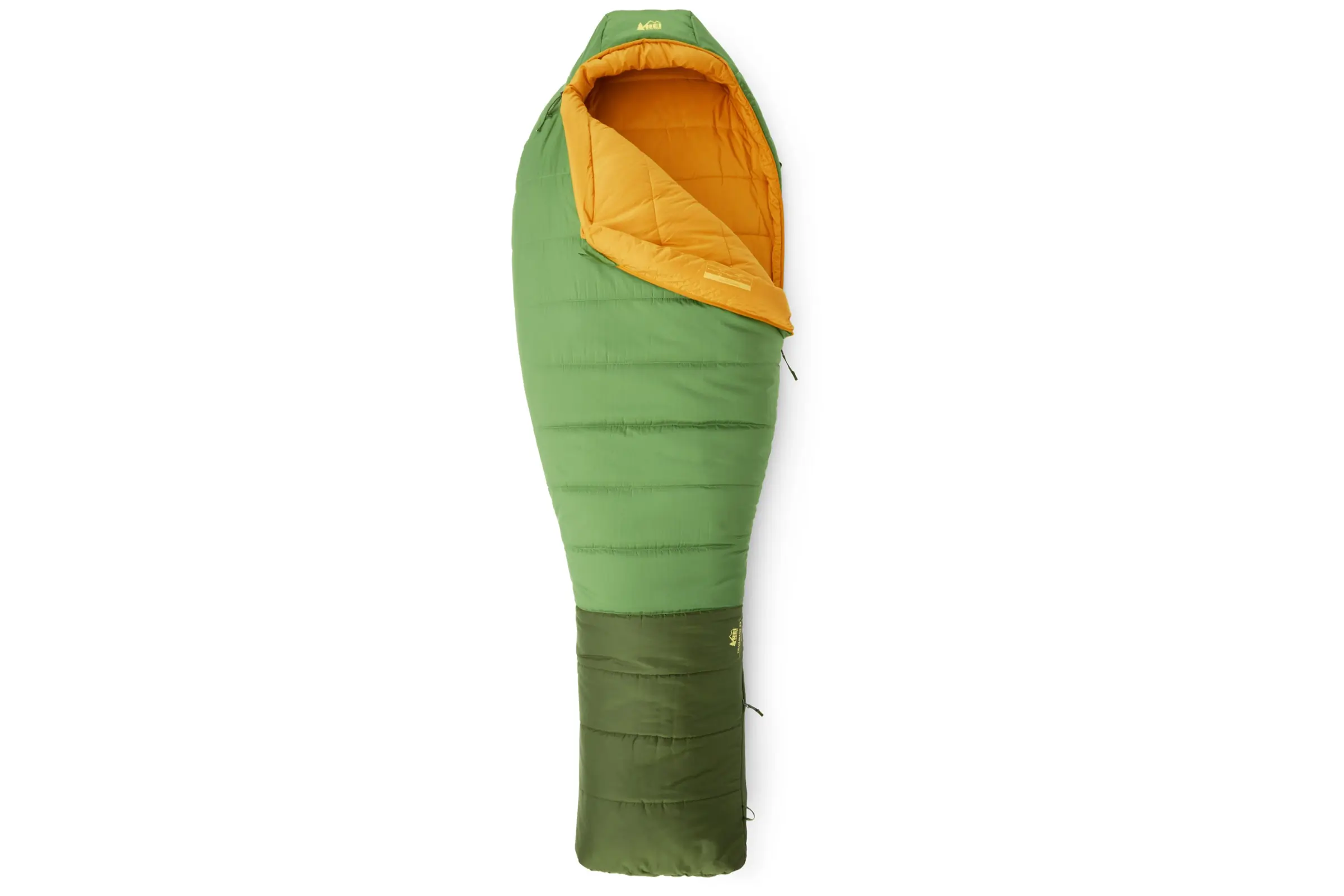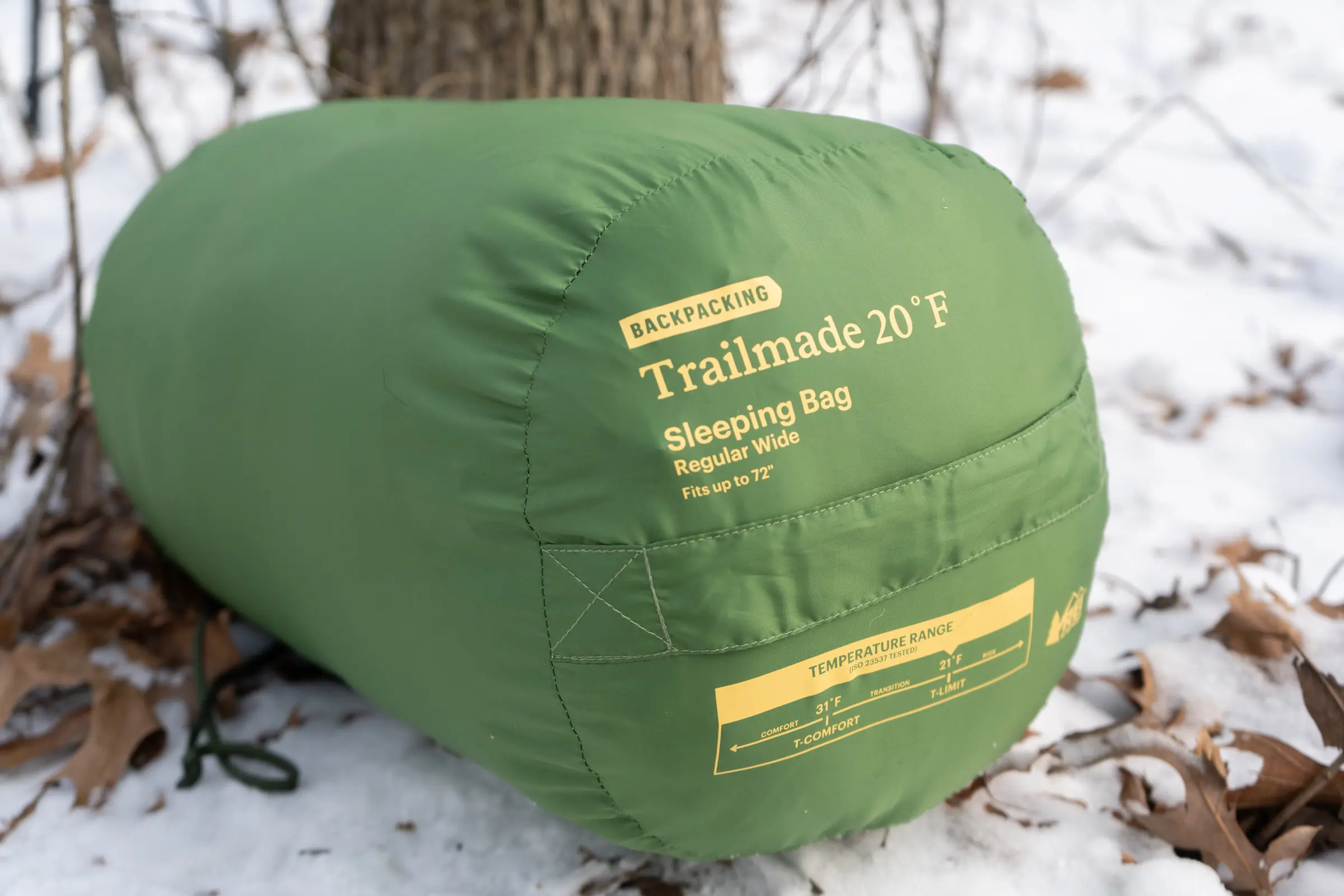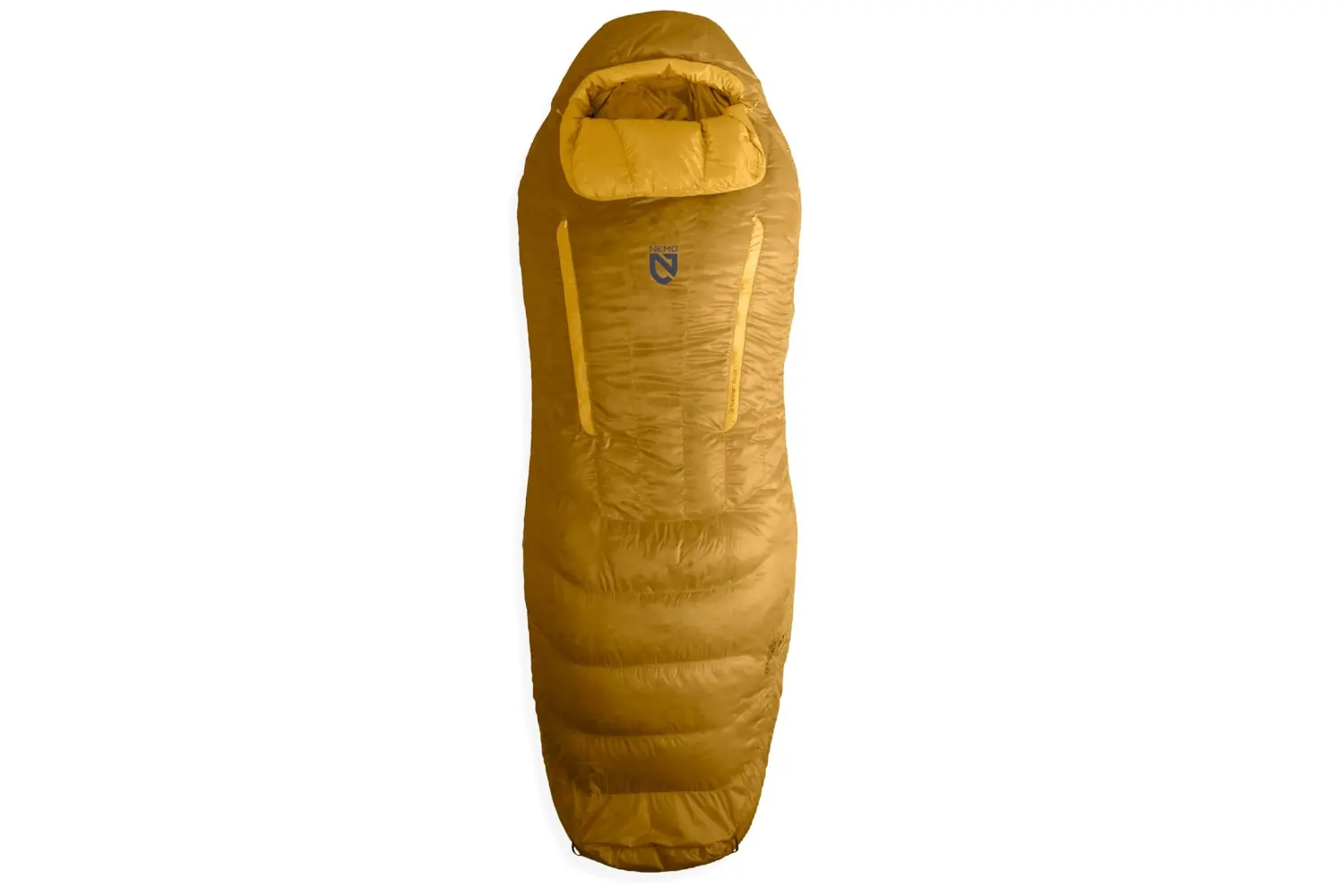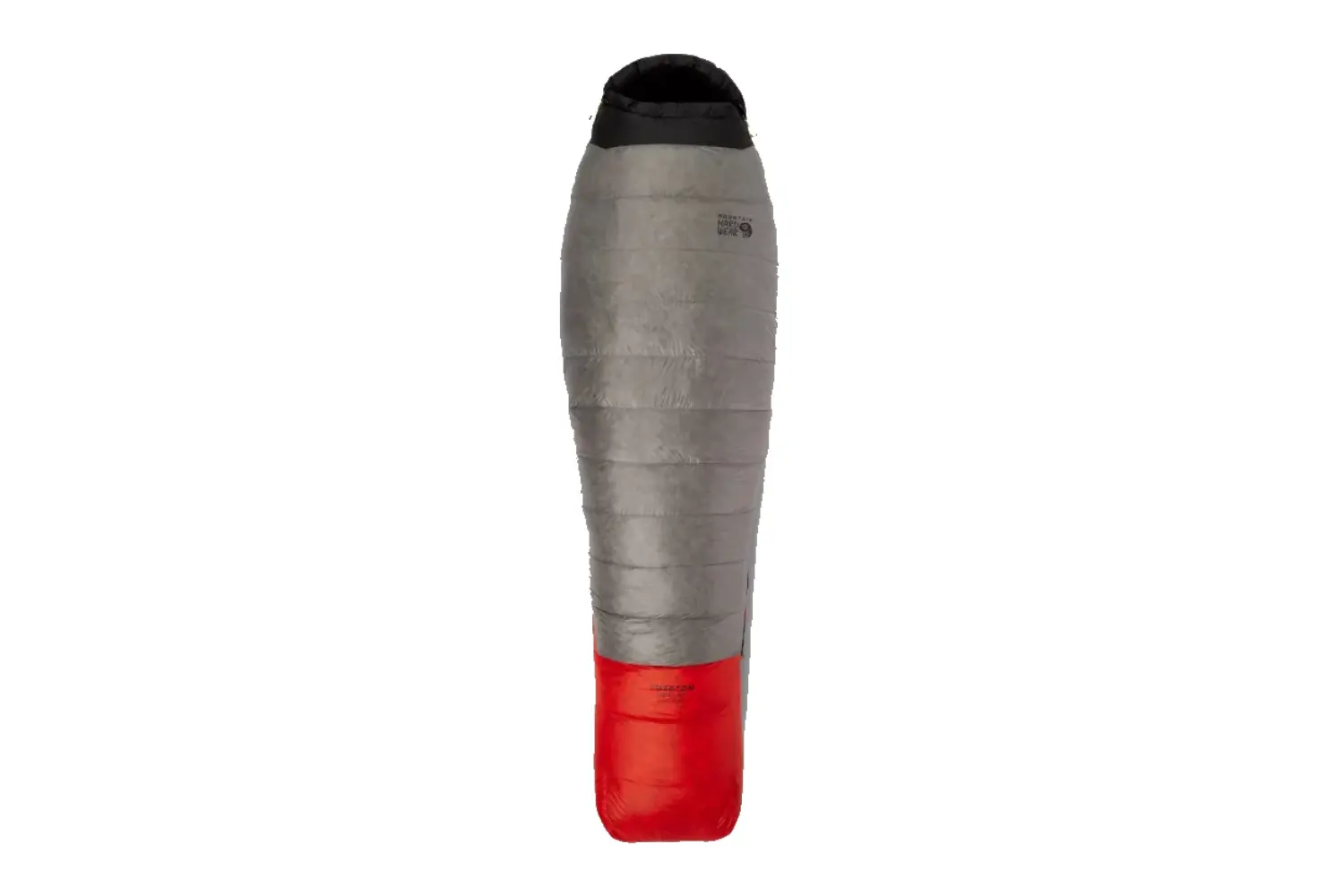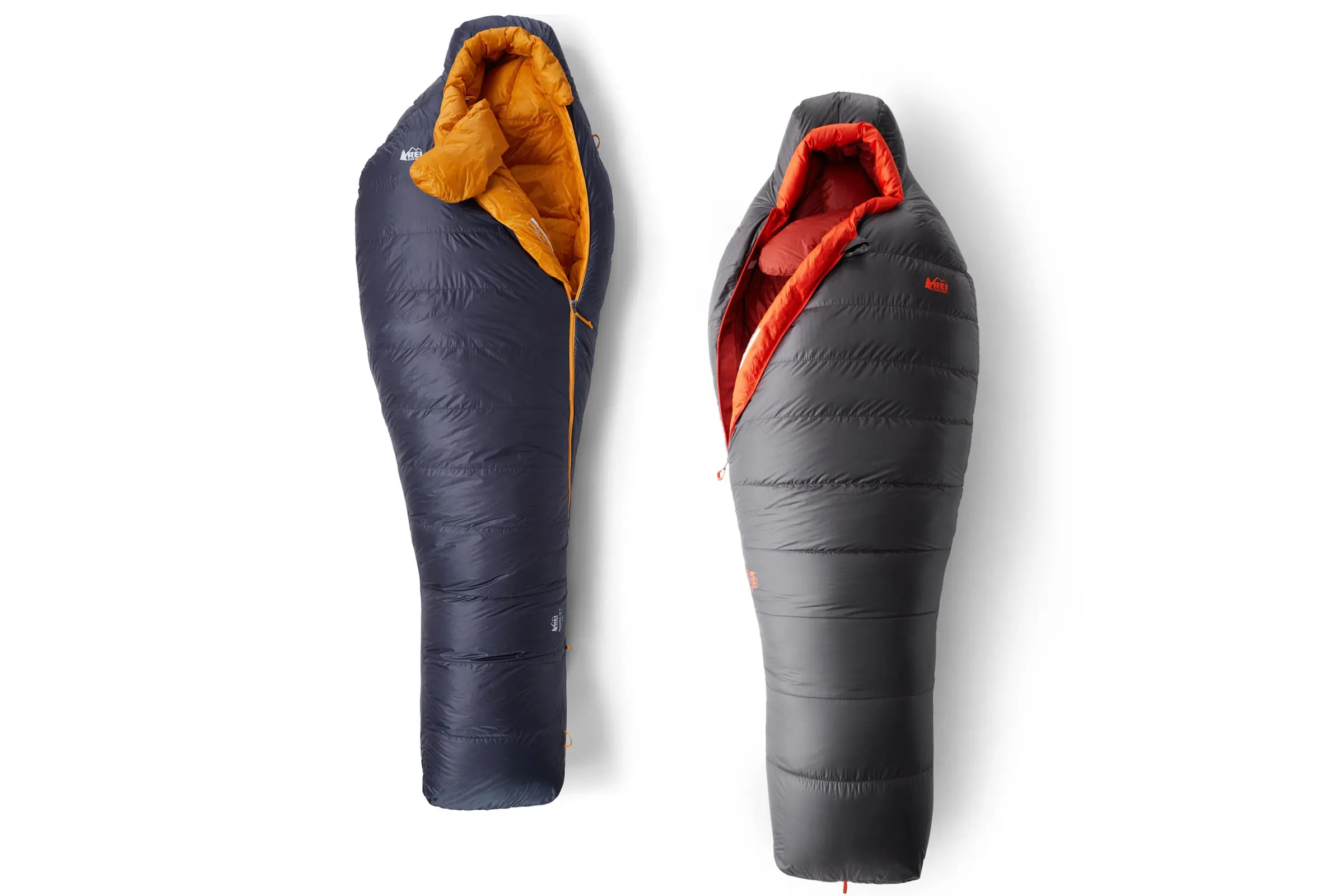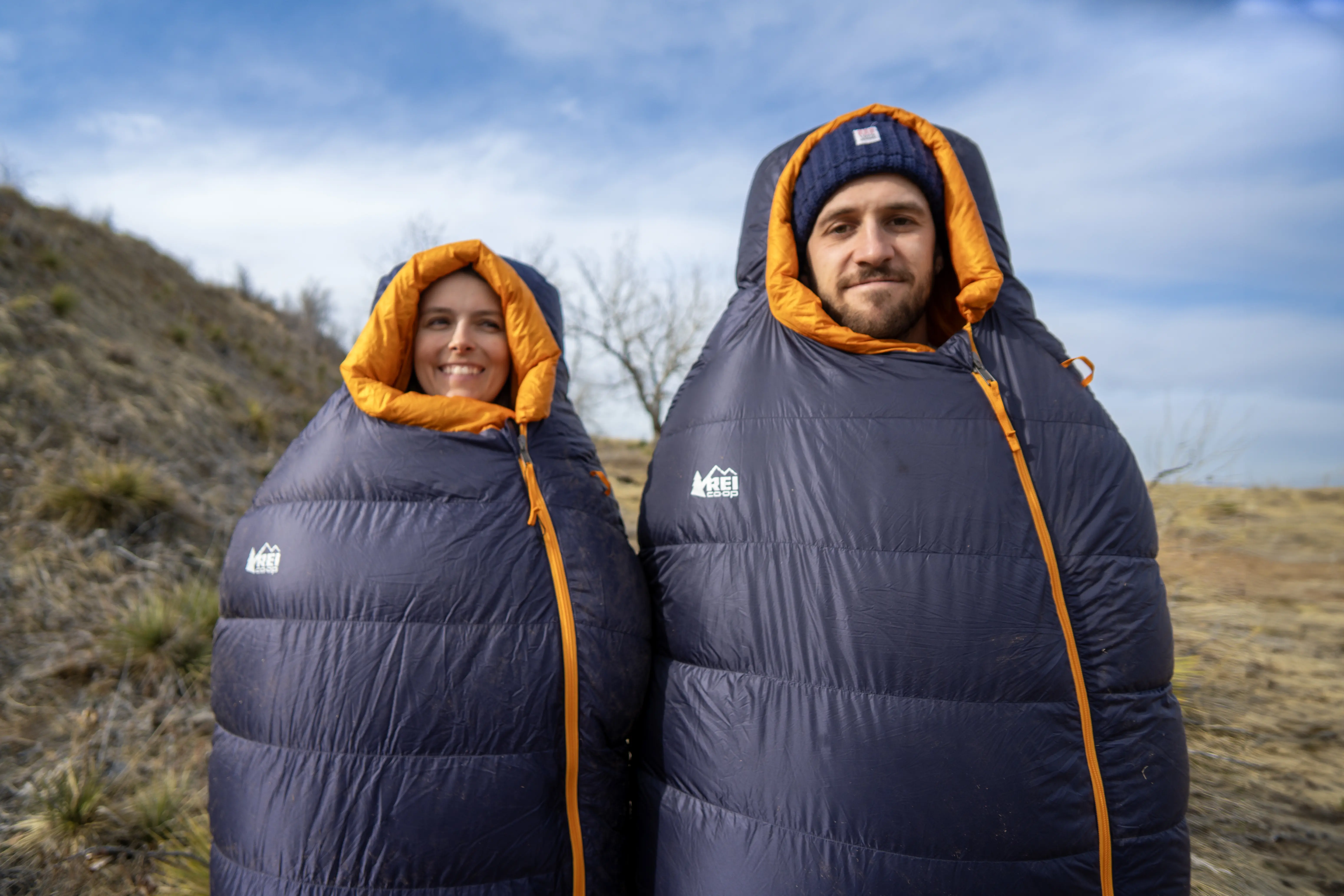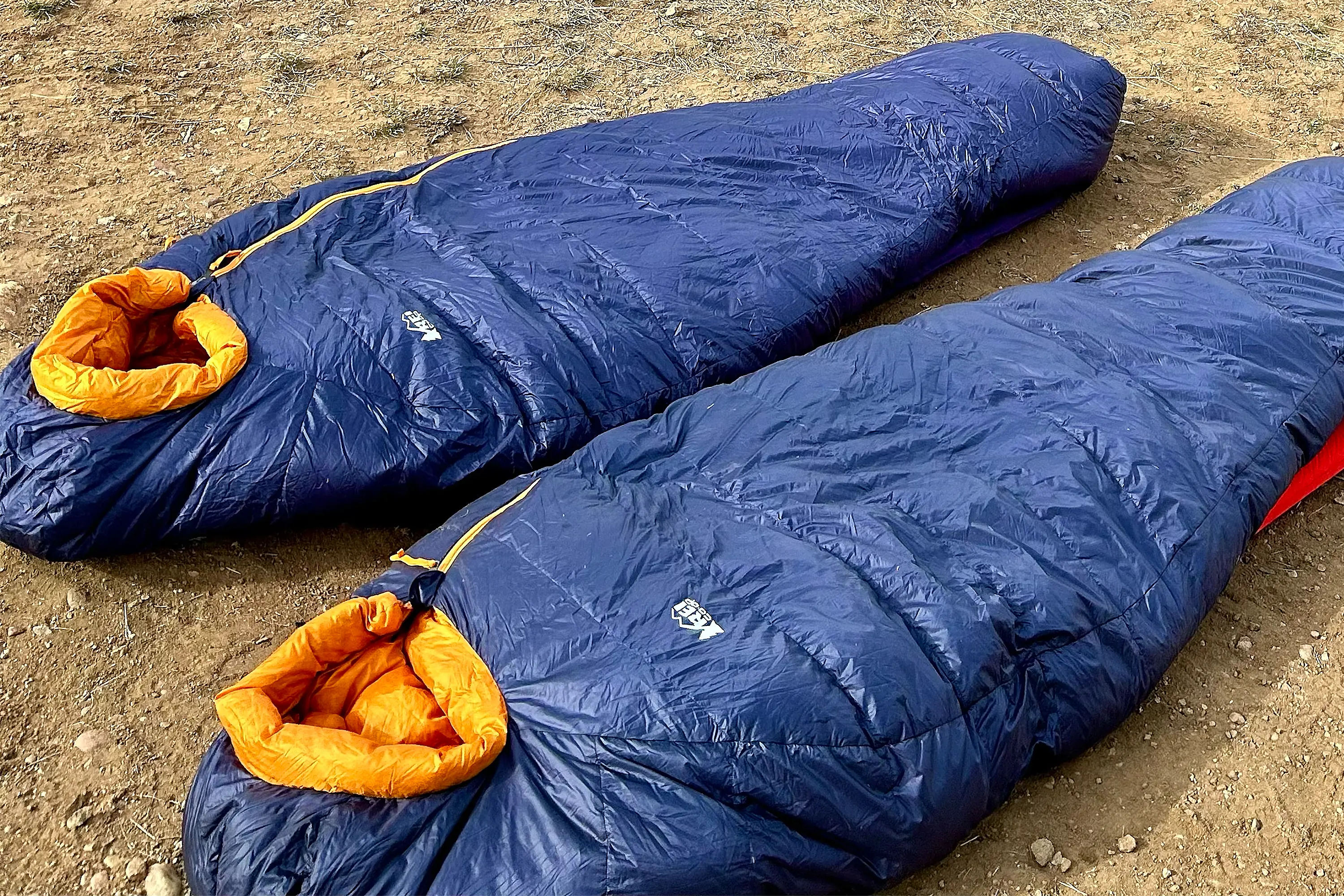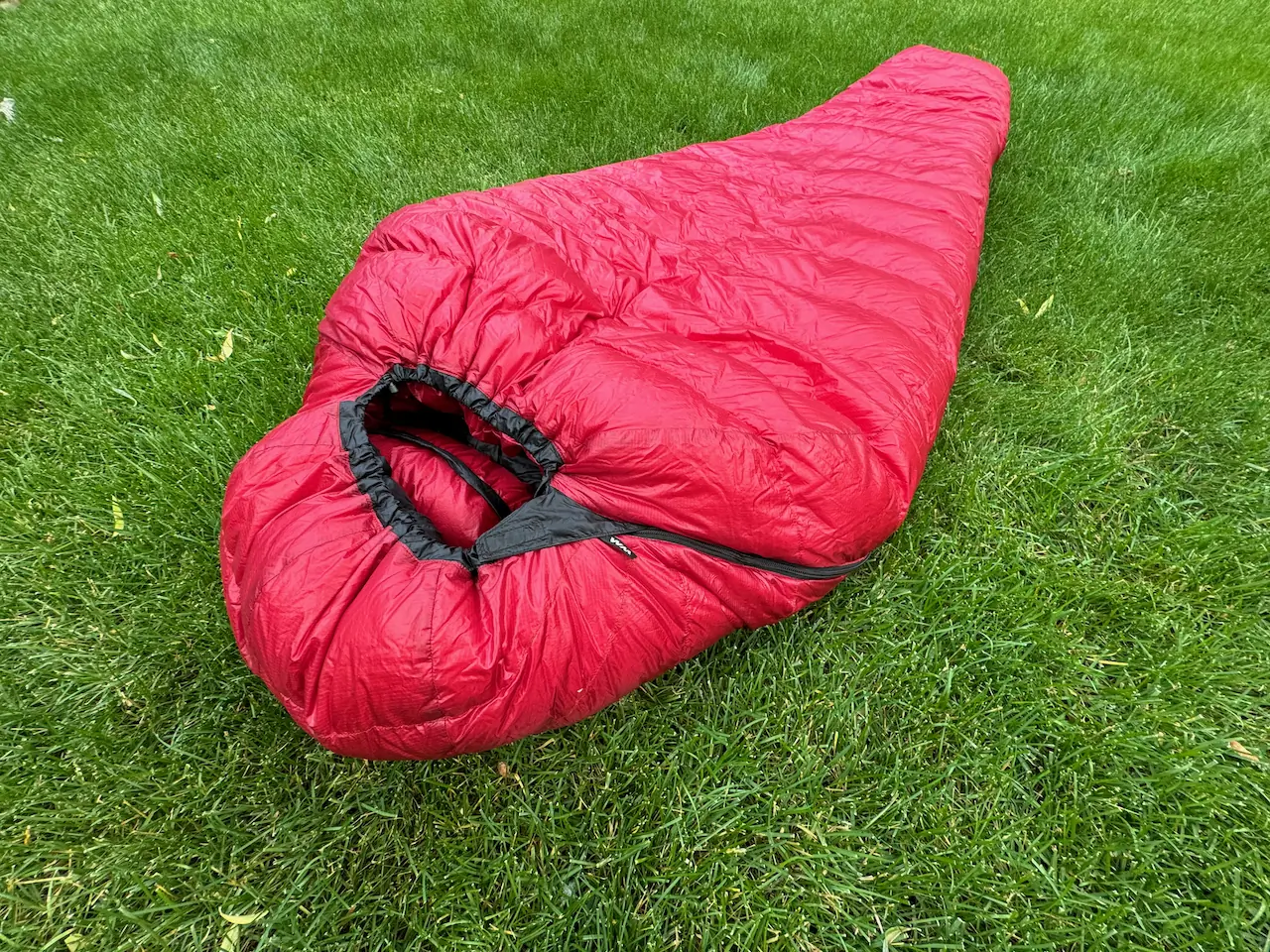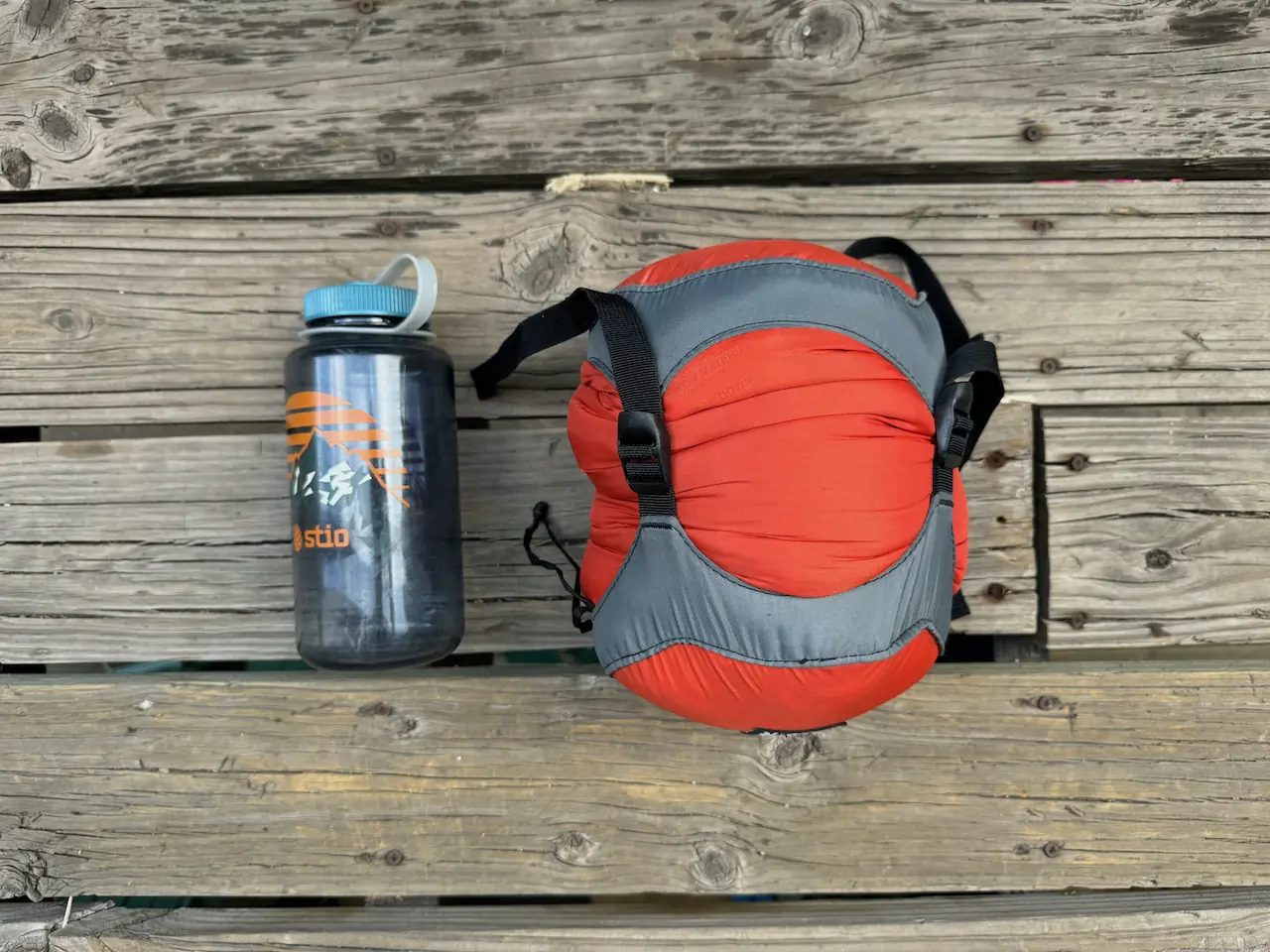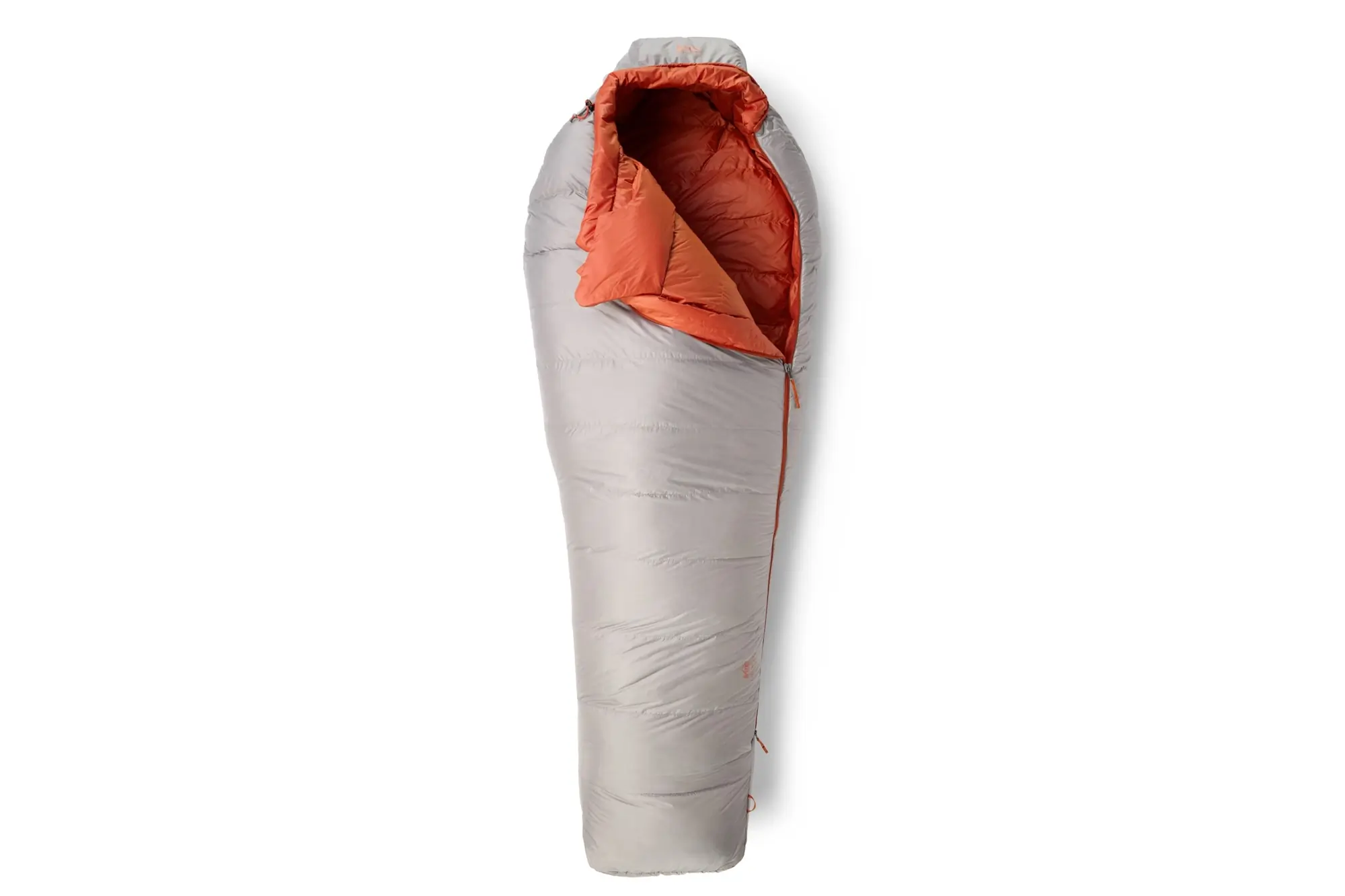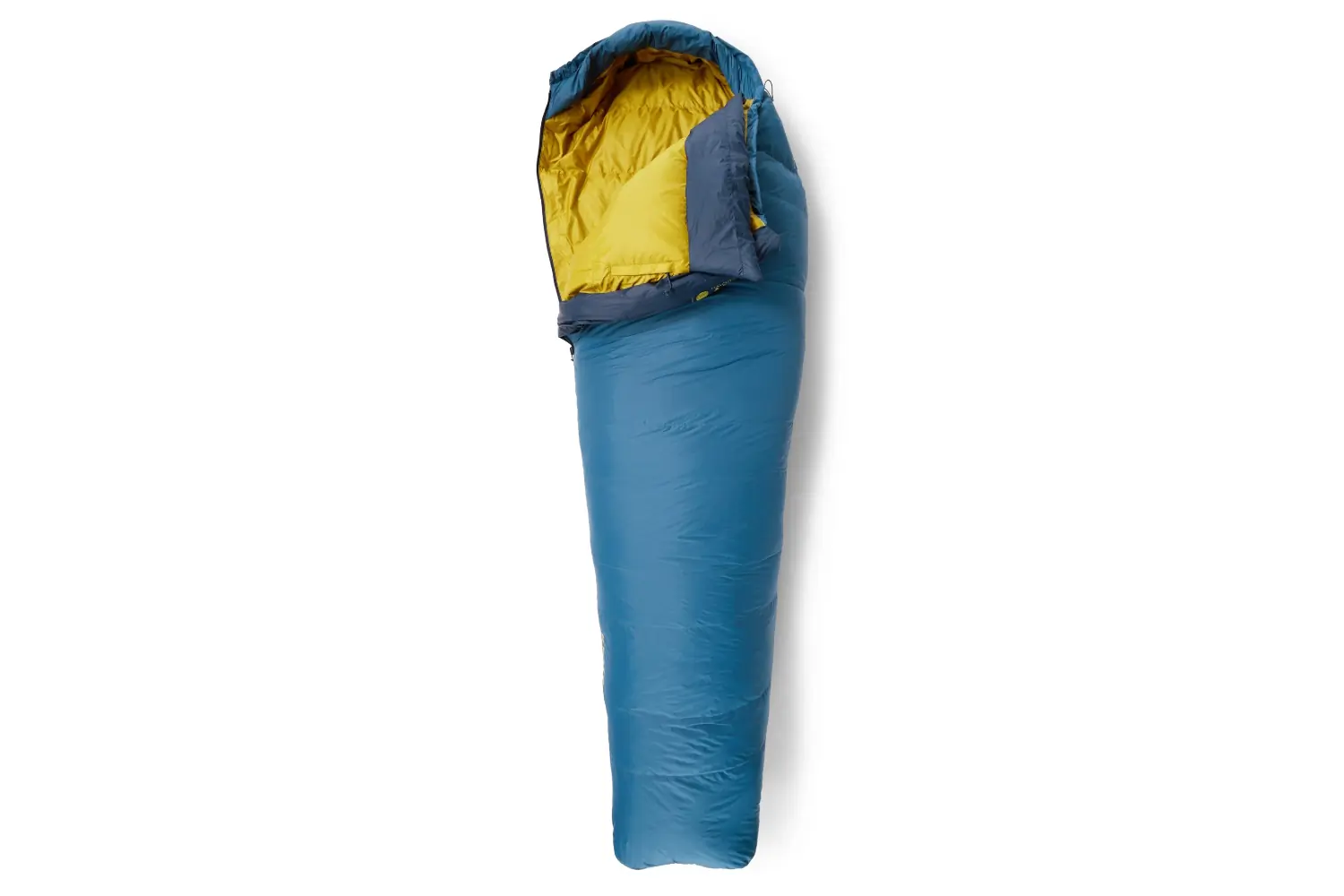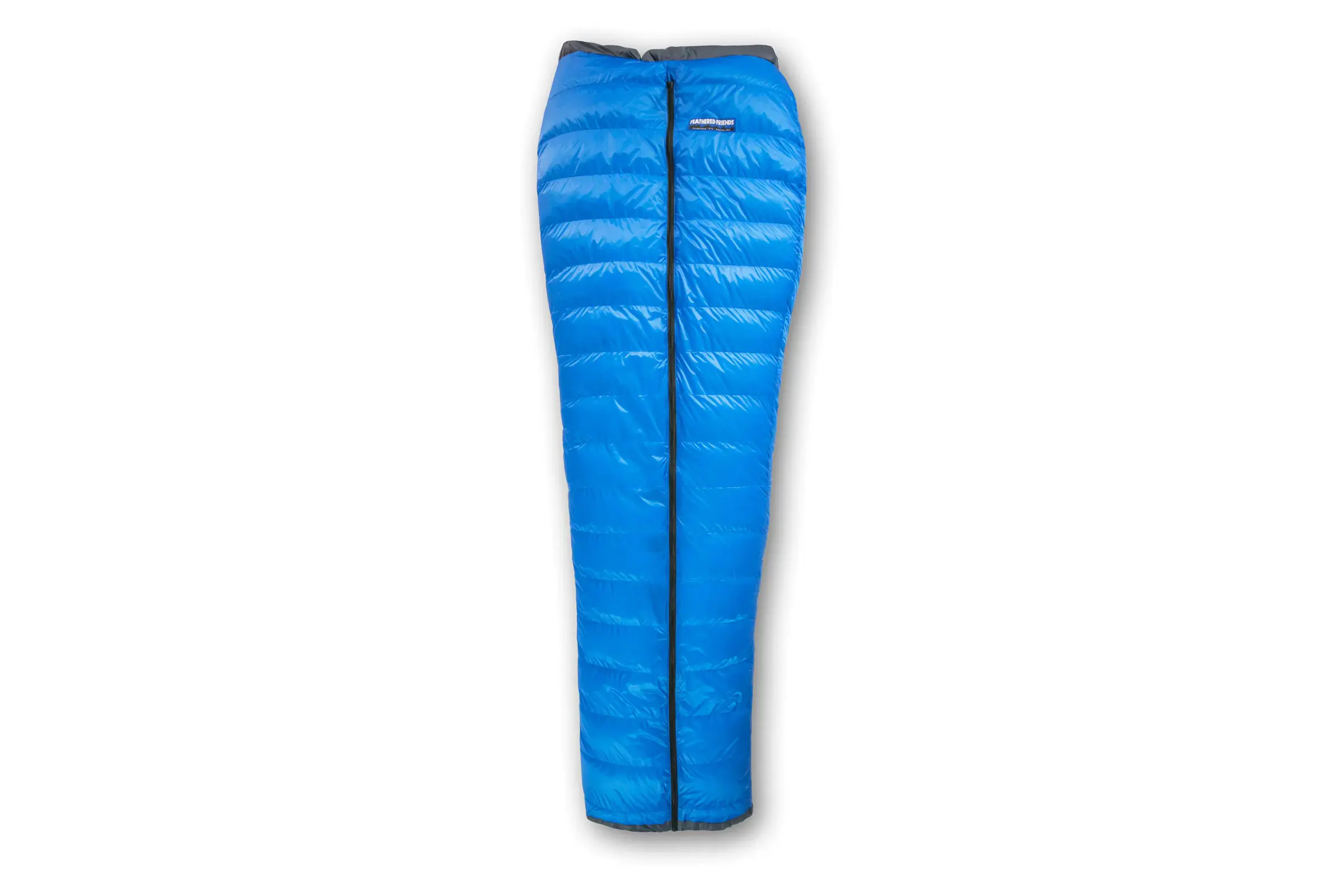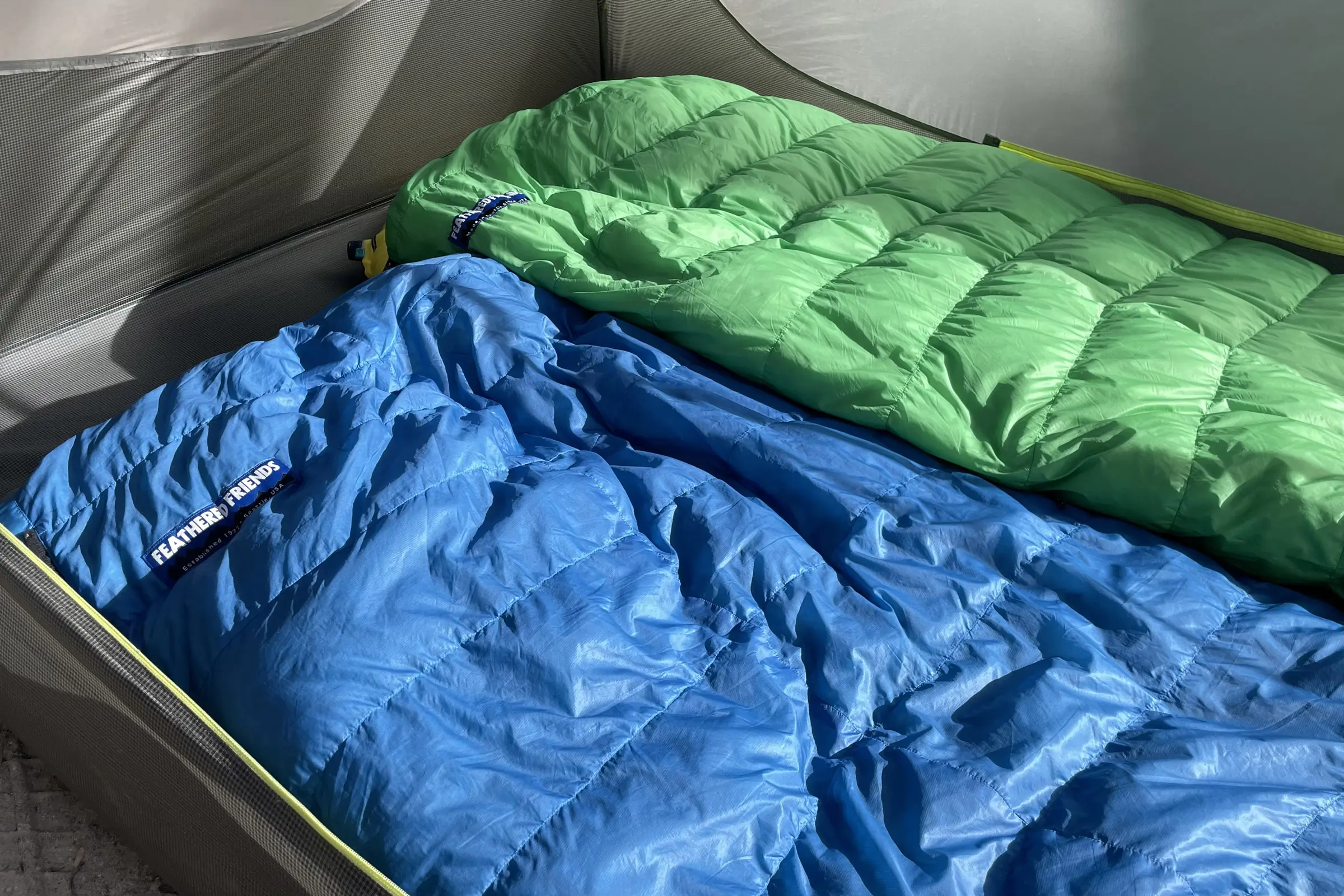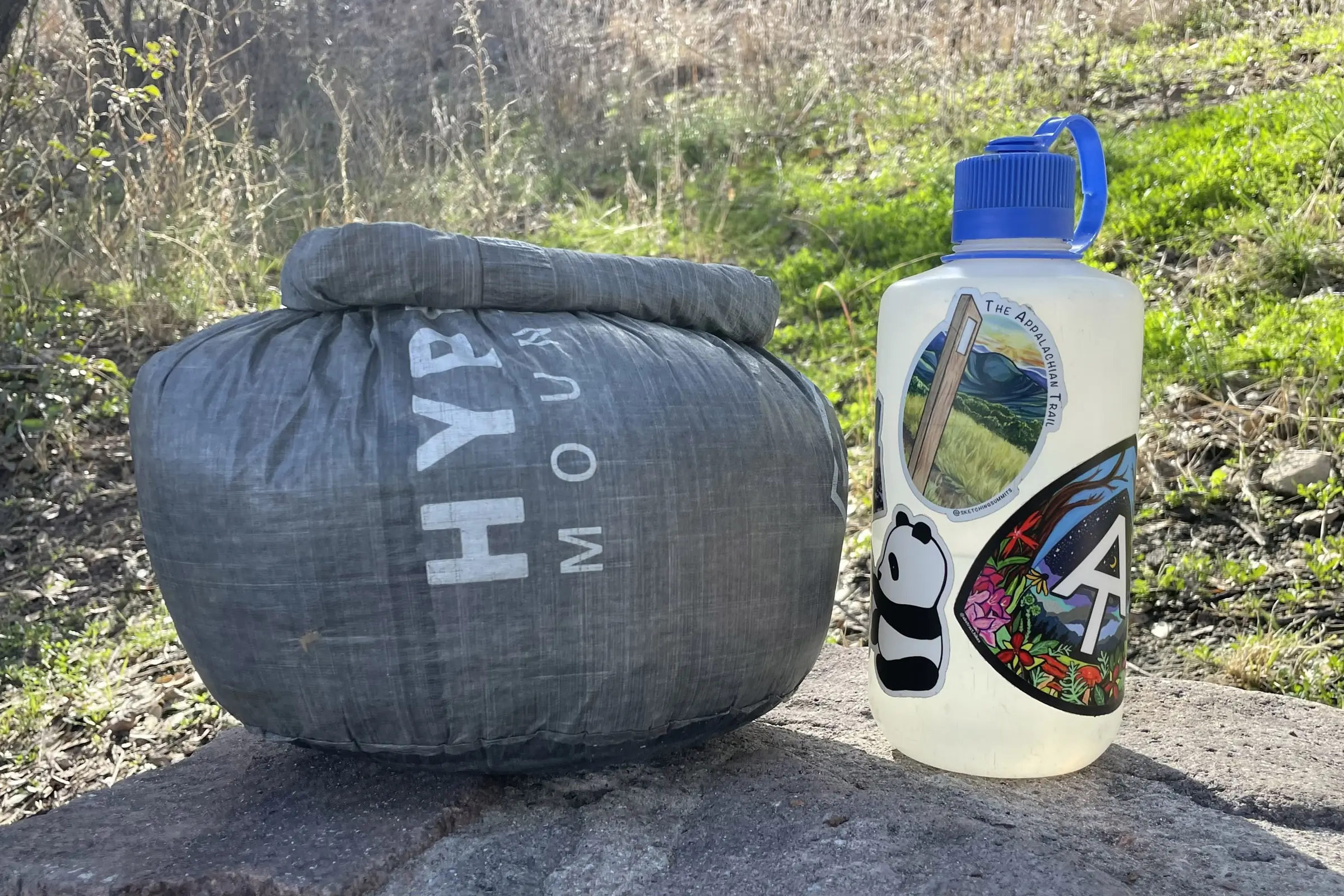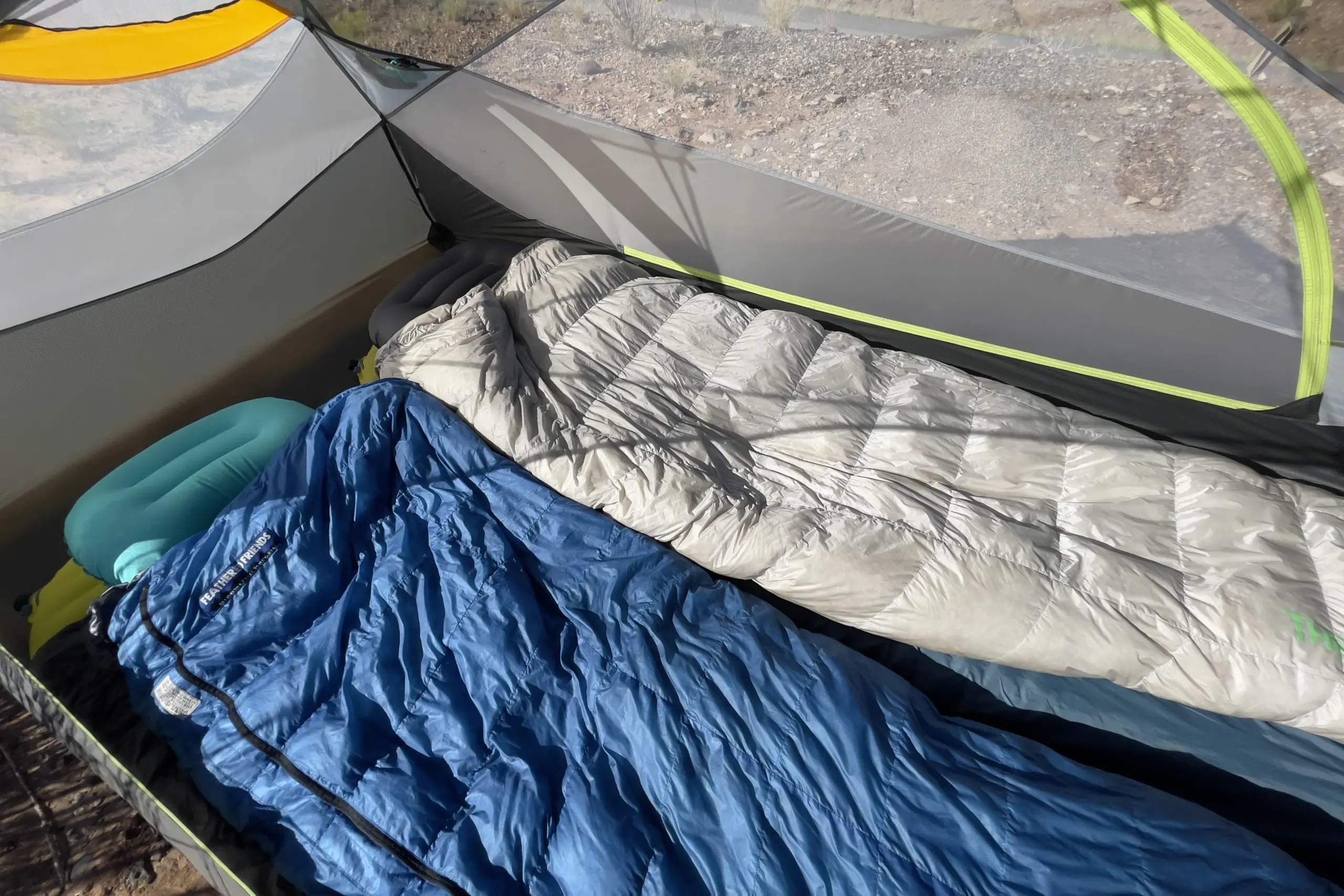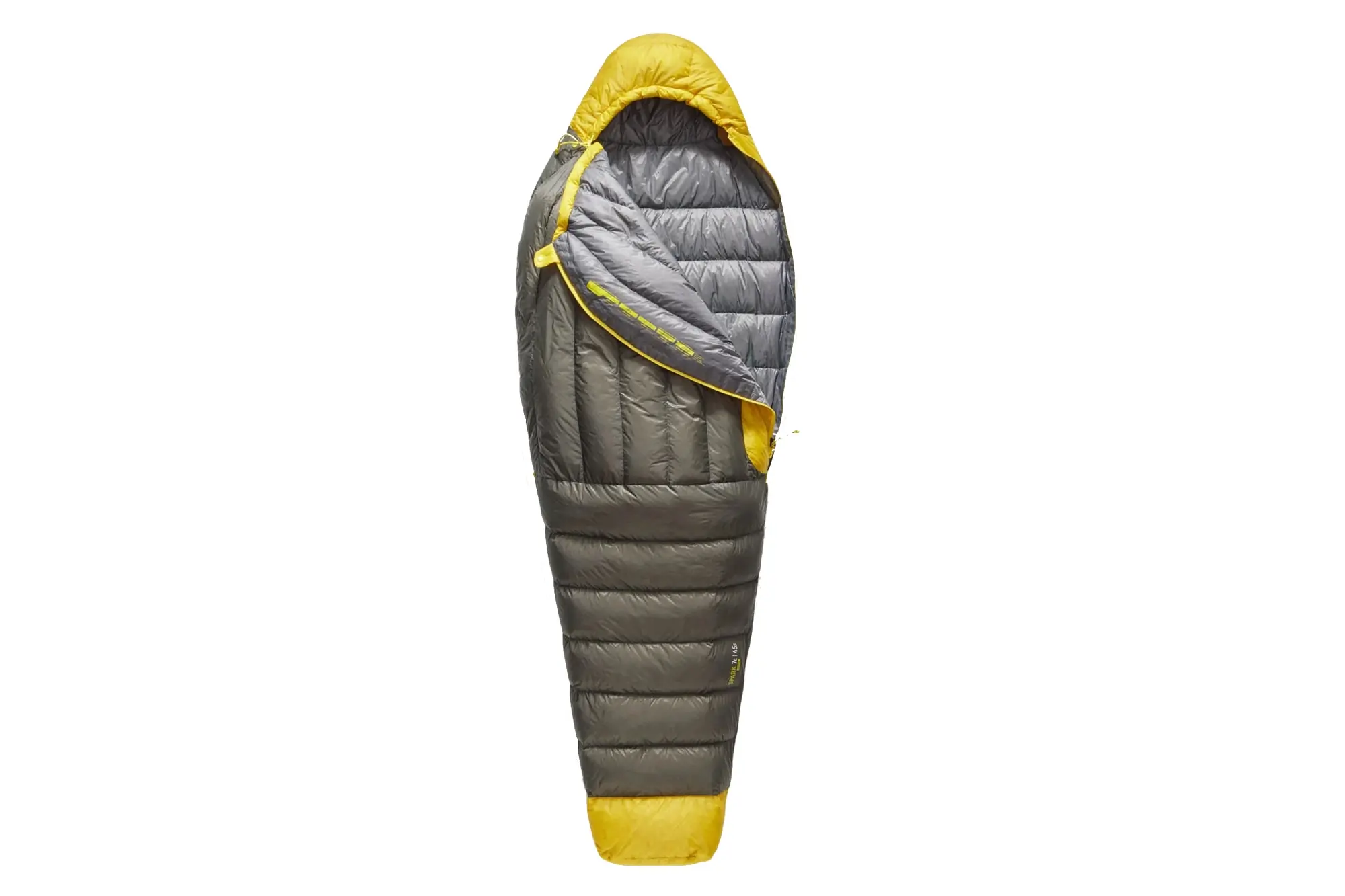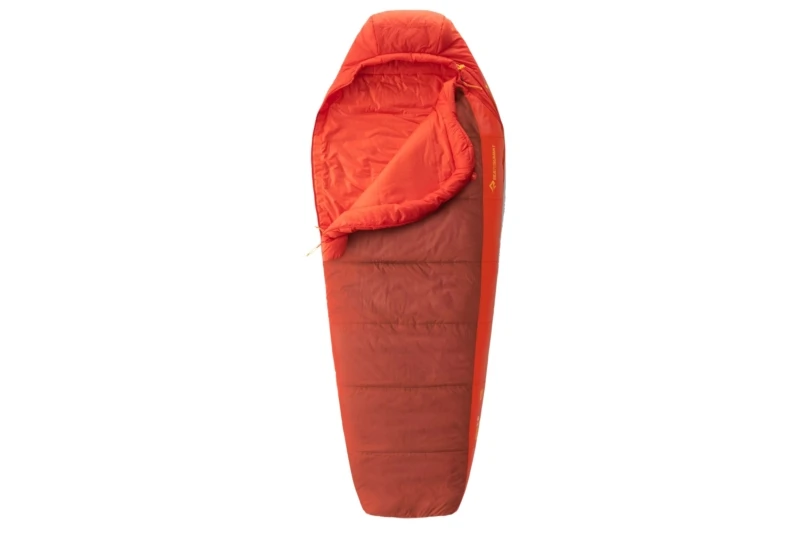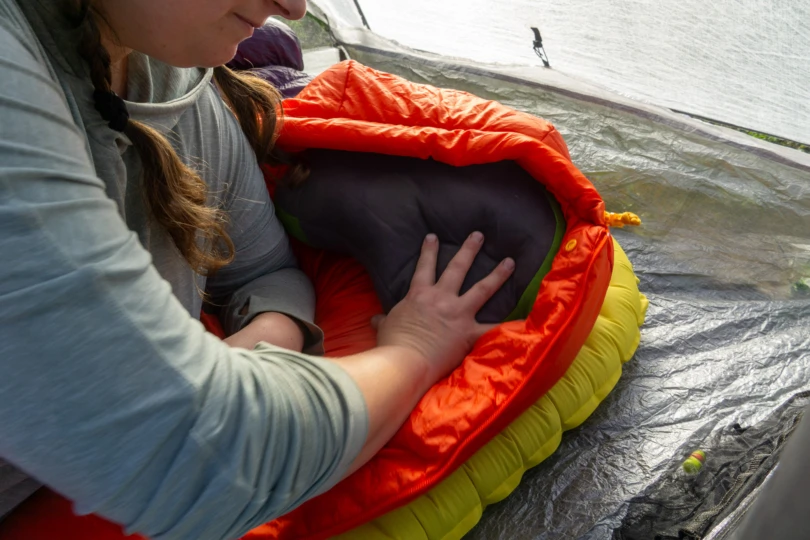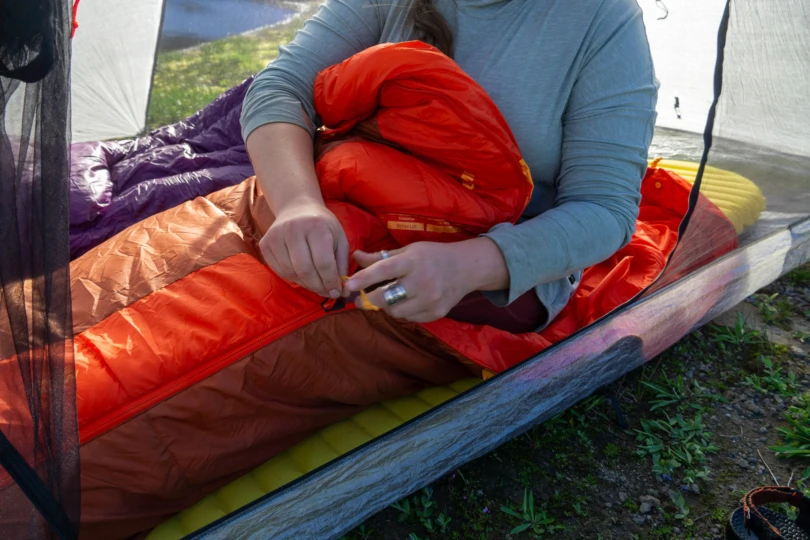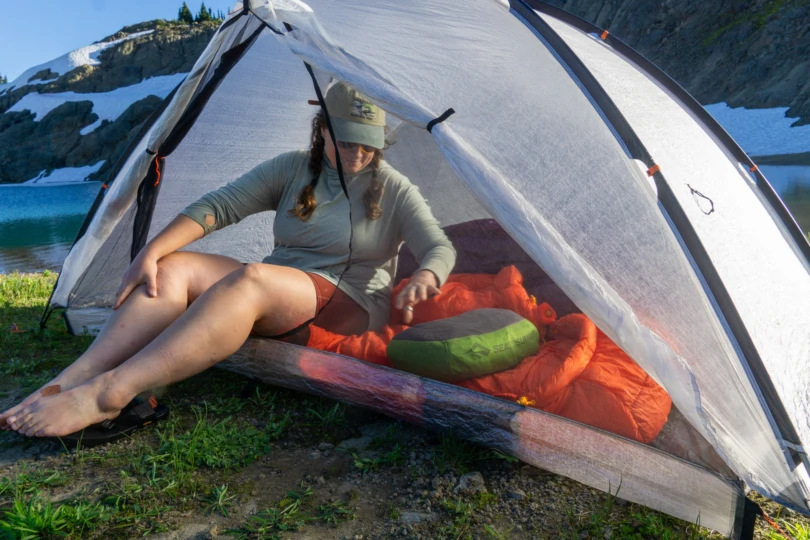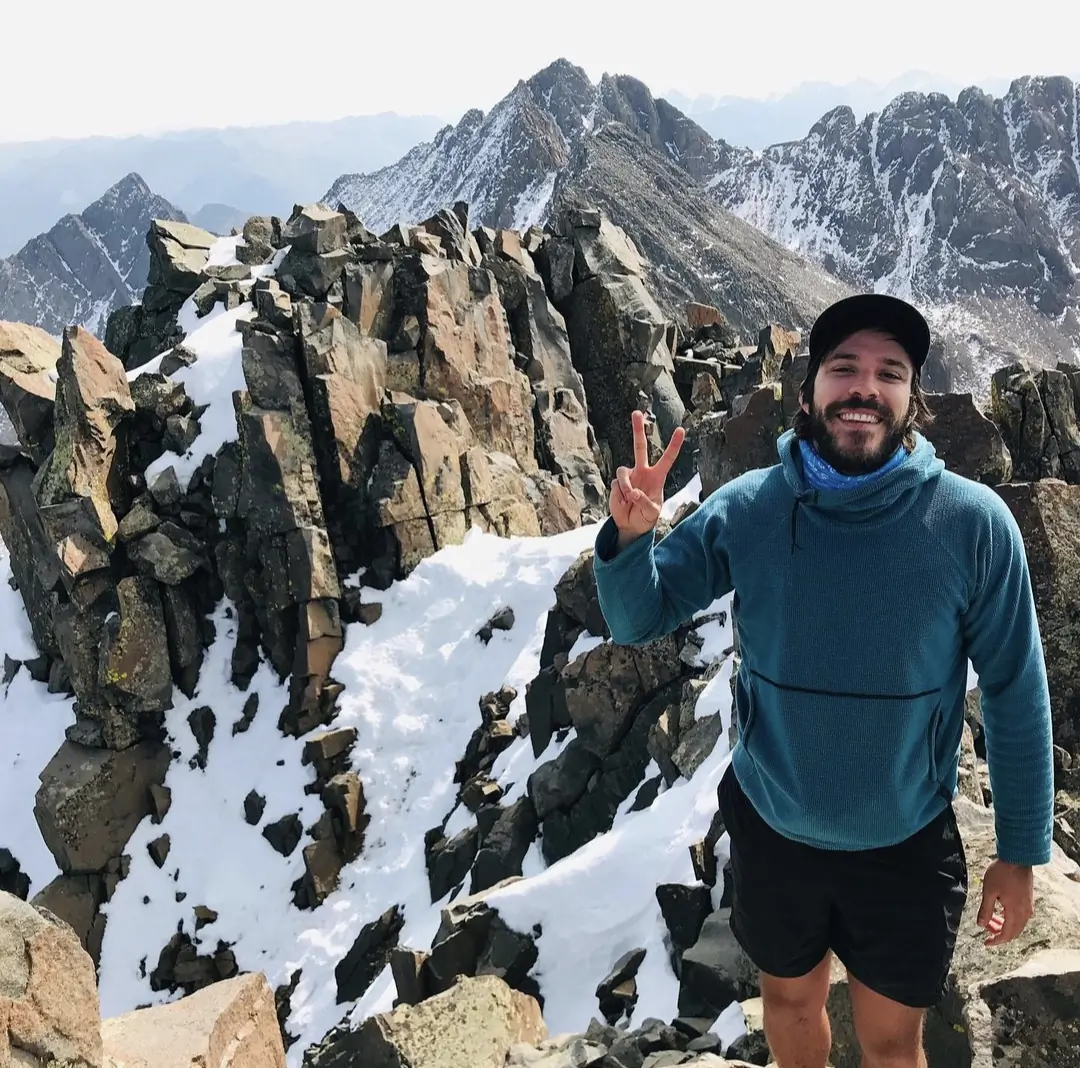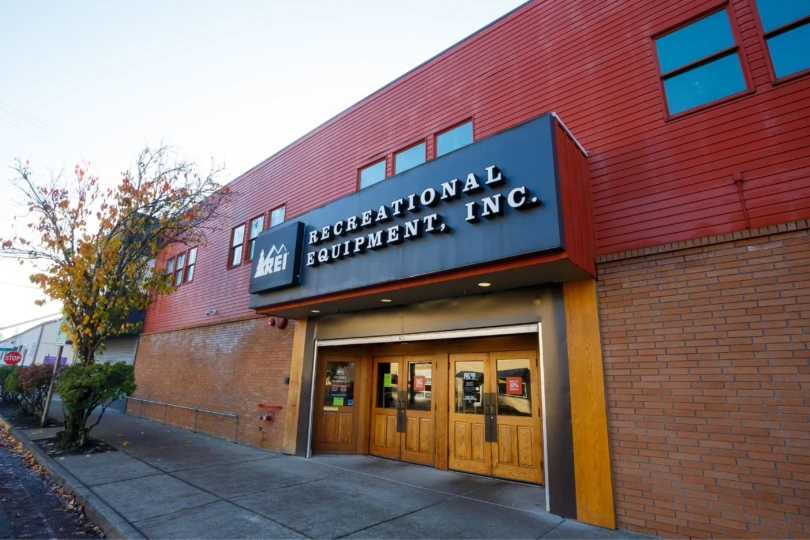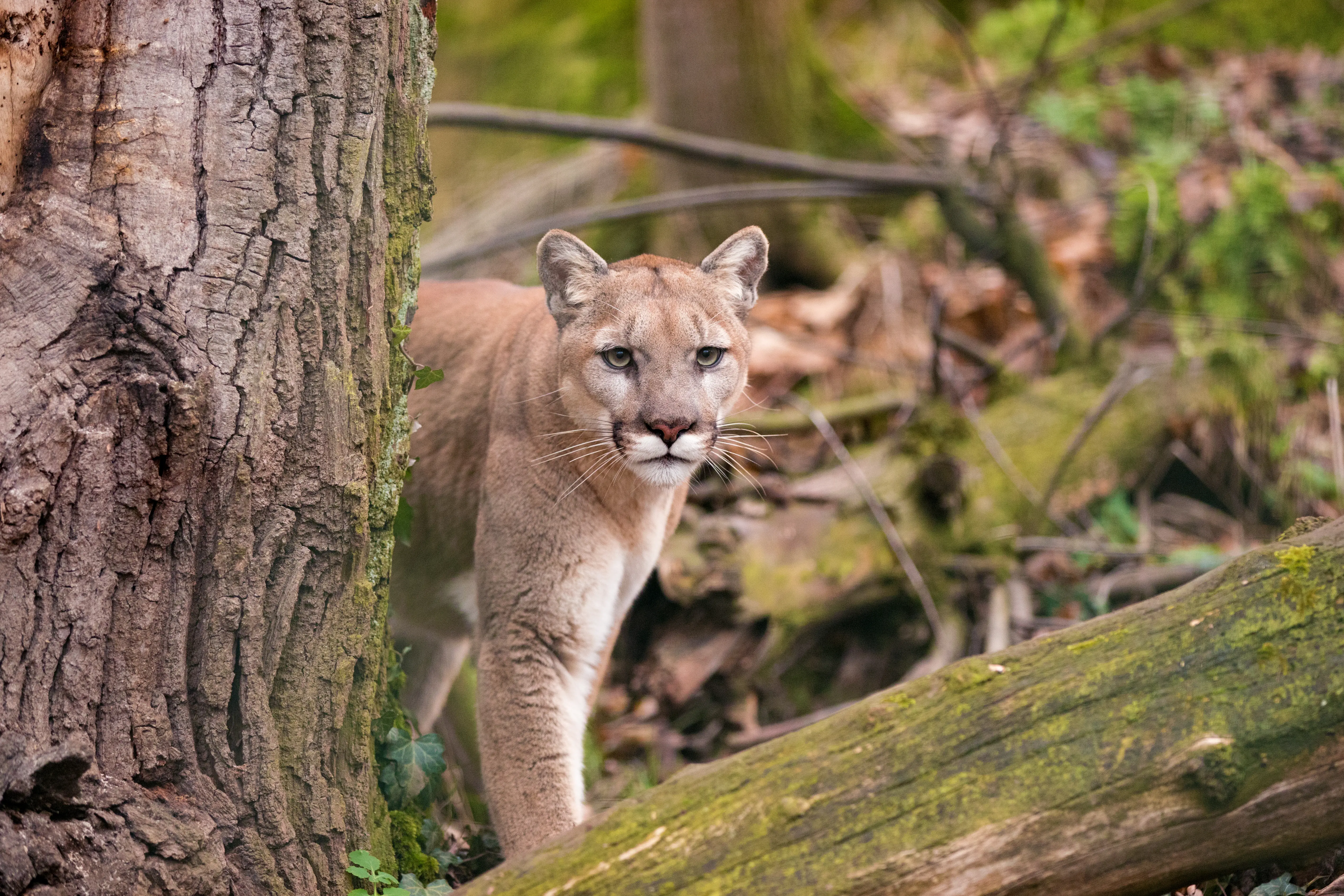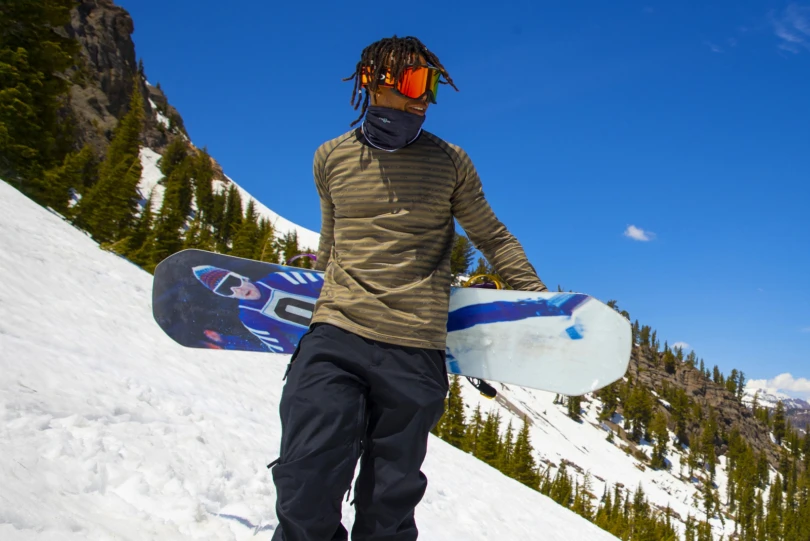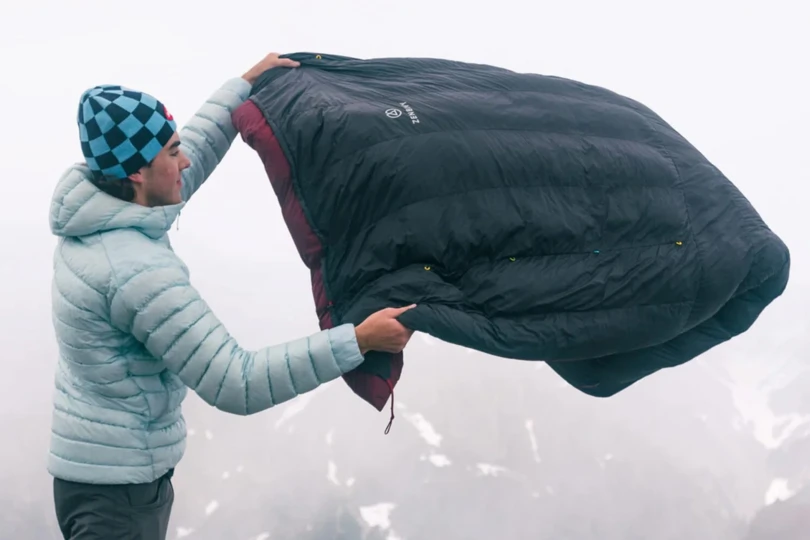A good sleeping bag is one of the most important investments an avid outdoors person will make. Our team has collectively tested piles of these puffy down cocoons for more than a decade now, and current authors have put over 100 of the best backpacking sleeping bags through the paces in our search.
From the snow-blasted alpine of Colorado to the African savannah — and even while dangling during big wall ascents in Yosemite — we rolled out our mobile beds and compared them side-by-side to find the ideal bags for anyone. Whether you’re after the do-it-all Feathered Friends Swallow UL or more budget-minded Mountain Hardwear Bishop Pass, we’ve got recommendations for everyone.
To evaluate the best backpacking sleeping bags, we certainly racked up the trail miles, but we also devised a series of tests to compare these bags fairly. From temperature and loft testing to moisture resistance and compressed sizes, we got the down-low for ourselves. All of our testing and experience inform our recommendations, and we’re sure that these are the best bags available today.
Editor’s Note: We updated our Backpacking Sleeping Bags guide on November 21, 2025, to add the Sea to Summit Hamelin, a budget-friendly synthetic bag that packs a number of camp-friendly features (such as the ability to wear it around).
The Best Backpacking Sleeping Bags of 2026
Feathered Friends Swallow UL
-
Warmth to Weight
9.0
-
Comfort
9.0
-
Material Durability
9.0
-
Feature Set
8.0
- Shell Fabric: Pertex Endurance UL
- Available Temperature Ratings: 20 (tested), 30°F
- Available Sizes: Regular (tested), Long
- Tested Packed Volume: 9 L (20°F)
- Tested Weight: 1 lb., 12 oz.
- Tested Fill Weight: 1 lb., 0.8 oz.
- Insulation: 950+ fill goose down
Pros
- Lofty and warm bag, even down to temperature rating
- Breathable outer shell that's also tough
- Very high 950+ down-fill rating
- Snag-free zipper design
Cons
- Pricey
- High loft can make stuffing difficult
Mountain Hardwear Bishop Pass
-
Warmth to Weight
7.0
-
Comfort
8.0
-
Material Durability
7.0
-
Feature Set
6.0
- Shell Fabric: 20-denier ripstop nylon
- Available Temperature Ratings: 0, 15 (tested), 30°F
- Available Sizes: Men's and Women's; Regular and Long
- Tested Packed Volume: 8 L
- Tested Weight: 2 lbs., 5 oz.
- Tested Fill Weight: 1 lb., 5.2 oz.
- Insulation: 650-fill down
Pros
- Ripstop fabric
- Plush liner
- Ergonomic foot compartment
- Can zip together with other MH bags
Cons
- Less packable than other options
- Small neck baffle
- Heavier than bags with higher fill power
REI Co-op Trailmade 20 Sleeping Bag
-
Warmth to Weight
6.0
-
Comfort
6.0
-
Material Durability
8.0
-
Feature Set
6.0
- Shell Fabric: Recycled polyester
- Available Temperature Ratings: 20°F (tested)
- Available Sizes: Short, Short Wide, Regular (tested), Regular Wide, Long, Long Wide
- Tested Packed Volume: 9.4 L
- Tested Weight: 3 lbs., 4.6 oz.
- Tested Fill Weight: N/A
- Insulation: Recycled polyester
Pros
- Excellent value
- Insulation handles moisture well
- Breast cellphone pocket
- Long upper/lower zips offer easy ventilation
- Accurate temperature rating
Cons
- Lower zippers prone to snagging
- Bulky
- Difficult drawstrings for the hood
NEMO Disco
-
Warmth to Weight
7.0
-
Comfort
9.0
-
Material Durability
8.0
-
Feature Set
8.0
- Shell Fabric: Recycled polyester ripstop with C0 DWR finish
- Available Temperature Ratings: 15 (tested), 30°F
- Available Sizes: Men's (tested) and Women's; Regular and Long
- Tested Packed Volume: 6.4 L
- Tested Weight: 2 lbs., 11 oz.
- Tested Fill Weight: 1 lb., 7 oz.
- Insulation: 650 fill-power duck down
Pros
- NEMO's spoon-shape bag is uber-comfortable, especially for those who toss and turn or side-sleep
- Updated Thermo Gill vents help modulate temperature
- Oversized draft collar is cozy to tuck into
- Smart manufacturing choices mean this bag is 100% recyclable at end-of-life
Cons
- More of a backpacking bag, and might be more than you need for camping
- No footbox venting
Katabatic Alsek 22 Quilt
-
Warmth to Weight
9.0
-
Comfort
9.0
-
Material Durability
8.0
-
Feature Set
7.0
- Shell fabric: Pertex Quantum Eco Ripstop
- Available temperature ratings: 22°F (tested)
- Available sizes: Short, Short Wide, Regular (tested), Regular Wide, Tall, Tall Wide
- Tested packed volume: 6.5 L
- Tested weight: 1 lb., 7.3 oz.
- Tested fill weight: 15.2 oz.
- Insulation: 850- or 900-fill down
Pros
- Conservatively temperature rated for most folks
- Impressively small packed size
- Wide range of sizes and different down fill types available
- Highly adjustable and draft-free pad system
- Well-stuffed draft collar
Cons
- Quilt can't be converted fully into a blanket on warm nights
- Bit pricier than some comparable quilts out there
Mountain Hardwear Phantom
-
Warmth to Weight
9.0
-
Comfort
8.0
-
Material Durability
6.0
-
Feature Set
7.0
- Shell Fabric: 10-denier ripstop nylon
- Available Temperature Ratings: 0 (tested), 15, 30°F
- Available Sizes: Short, Regular (tested), Long
- Tested Packed Volume: 6 L
- Tested Weight: 2 lbs., 10.4 oz.
- Tested Fill Weight: 1 lb., 14.5 oz.
- Insulation: 800-fill down
Pros
- Lightweight shell fabric keeps weight down
- 800-fill down
- Circumferential neck baffle
- Compression sack included
- Black lining dries out faster in the sun
Cons
- Expensive
- Trim cut; not the best for stomach sleepers
REI Co-op Magma
-
Warmth to Weight
8.0
-
Comfort
7.0
-
Material Durability
8.0
-
Feature Set
7.0
- Shell Fabric: Pertex 15-denier ripstop nylon
- Available Temperature Ratings: 15 (tested), 30°F
- Available Sizes: Short Narrow, Short, Short Wide, Medium Narrow, Medium (tested), Medium Wide, Long Narrow, Long (tested), Long Wide
- Tested Packed Volume: 8 L
- Tested Weight: 2 lbs., 3.6 oz.
- Tested Fill Weight: 1 lb., 7.3 oz.
- Insulation: 850-fill power down
Pros
- Range of 9 sizes
- Great value ($430 for an 850-fill down bag)
- Low weight at just above 2 pounds
- Full-length zipper
- Great draft collar and hood
Cons
- Included stuff sack isn't compressible
- Mummy design may feel too tight
- Only available in 15- and 30-degree models
Other Sleeping Bags We’ve Tested and Recommend
There is a huge array of sleeping bags on the market, and while we’ve keyed in on the seven above as award-worthy, there are plenty of other excellent bags out there. Check out the bags below as similar options that we stand behind.
-
Warmth to Weight
9.0
-
Comfort
9.0
-
Material Durability
8.0
-
Feature Set
8.0
- Shell Fabric: 12-denier ripstop nylon
- Available Temperature Ratings: 20°F (tested)
- Available Sizes: 5'6", 6'0" (tested), 6'6", 7'0"
- Tested Packed Volume: 5L
- Tested Weight: 1 lb., 15 oz.
- Tested Fill Weight: 19 oz.
- Insulation: 850-fill down
Pros
- Wide girth allows extra layering in very cold conditions
- Large draft tubes and collar
- 5" loft of 850-fill goose down
- Four different lengths available
Cons
- Expensive
- 12D shell fabric will require a light touch, can snag
-
Warmth to Weight
7.0
-
Comfort
7.0
-
Material Durability
7.0
-
Feature Set
7.0
- Shell Fabric: Recycled PET polyester
- Available Temperature Ratings: 20°F (tested)
- Available Sizes: Short Narrow, Short, Short Wide, Medium Narrow, Medium (tested), Medium Wide, Long Narrow, Long, Long Wide
- Tested Packed Volume: 6.7 L (20°F)
- Tested Weight: 2 lb., 11 oz.
- Tested Fill Weight: 1 lb., 9.4 oz.
- Insulation: 600-fill power down, synthetic fill
Pros
- Price for down
- Snag-free zippers
- Added synthetic fill in footbox protects against tent dampness
- Offered in nine different sizes
Cons
- Heavier for the temperature rating due to durable build
- Not as packable as some higher fill down bags
-
Warmth to Weight
6.0
-
Comfort
6.0
-
Material Durability
7.0
-
Feature Set
5.0
- Shell Fabric: Recycled 20-denier nylon
- Available Temperature Ratings: 0, 20 (tested), 40°F
- Available Sizes: Men's and Women's; Regular and Long
- Tested Packed Volume: 10 L
- Tested Weight: 2 lbs., 7 oz.
- Tested Fill Weight: 1 lb., 0.4 oz.
- Insulation: 550-fill down
Pros
- Very affordable pricing
- Dual sliders on the zipper for ventilation
- Down-fill at synthetic bag prices
- Zippered internal stash pocket
Cons
- 550-fill down limits compression size
- Zipper sliders can snag
- Draft collar isn't very well insulated
-
Warmth to Weight
9.0
-
Comfort
8.0
-
Material Durability
7.0
-
Feature Set
6.0
- Shell Fabric: Pertex Endurance UL
- Available Temperature Ratings: 20 (tested), 30, 40°F
- Available Sizes: Regular, Long; Standard, Wide
- Tested Packed Volume: 8 L
- Tested Weight: 1 lb., 9.2 oz.
- Tested Fill Weight: 16 oz.
- Insulation: 950+ fill goose down
Pros
- Highly versatile hybrid-quilt design
- Excellent warmth-to weight ratio
- Spacious and comfortable
- Made in USA
Cons
- On the pricier side
- No hood may require bringing extra head layers
-
Warmth to Weight
8.0
-
Comfort
8.0
-
Material Durability
7.0
-
Feature Set
7.0
- Shell Fabric: 10D nylon w/ a PFAS free DWR treatment
- Available Temperature Ratings: 0, 15, 30 (tested), 45°F
- Available Sizes: Regular (tested), Long, Double
- Tested Compressed Volume: 4 L
- Tested Weight: 1 lb., 1.5 oz.
- Tested Fill Weight: 9.3 oz.
- Insulation: 850+ fill RDS certified down
Pros
- Ultralight weight for summer use
- Comfortable in the upper body
- Wide range of customization
- Compatible for couples
Cons
- Bulky #5 zipper and cording
- Lacking a differential cut
- Snug fit around the legs
-
Warmth to Weight
7.0
-
Comfort
7.0
-
Material Durability
7.0
-
Feature Set
7.0
- Shell Fabric: 100% recycled ripstop nylon w/ DWR
- Available Temperature Ratings: 0, 20 (tested), 32°F
- Available Sizes: Small, Regular, Long
- Tested Packed Volume: 7.2 L (20°F)
- Tested Weight: 1 lbs., 12 oz. (regular)
- Tested Fill Weight: 1 lb.
- Insulation: 800-fill hydrophobic down
Pros
- Heat-mapped, zoned insulation
- External zippered pocket
- Baffled pocket of insulation at feet
Cons
- On the heavy side
- Expensive
-
Warmth to Weight
8.0
-
Comfort
8.0
-
Material Durability
7.0
-
Feature Set
6.0
- Shell Fabric: Ultralight nylon fabric (7D or 10D)
- Available Temperature Ratings: 0, 10, 20 (tested), 30, 40, 50°F
- Available Sizes: Short, Regular (tested), Regular Wide, Long, Long Wide
- Tested Packed Volume: 8.5 L
- Tested Weight: 1 lb., 3.2 oz — 1 lb., 5.2 oz.
- Tested Fill Weight: 15.5 oz.
- Insulation: 850- or 950-fill down
Pros
- High level of customization
- Superior warmth-to-weight ratio
- Does a great job of reducing drafts and cold spots for a quilt
Cons
- Pretty long lead times on custom orders (2-4 weeks, sometimes up to 6)
- Pull cord at neck often gets annoying
-
Warmth to Weight
6.0
-
Comfort
7.0
-
Material Durability
7.0
-
Feature Set
7.0
- Shell Fabric: 50D recycled polyester
- Available Temperature Ratings: 15, 30°F (tested)
- Available Sizes: Men's and Women's; Regular and Long
- Tested Packed Volume: 20 L (30°F)
- Tested Weight: 2 lb., 8 oz.
- Tested Fill Weight: 1 lb., 9 oz.
- Insulation: Revive Loft synthetic
Pros
- Budget price
- Accommodating cut
- Extensive venting options and wearable-function
- Rugged synthetic insulation won't wet-out or be damaged easily
Cons
- Bulky packed size
Backpacking Sleeping Bag Comparison Chart
| Sleeping Bag | Price | Temperature Offerings | Available Sizes | Tested Weight | Insulation |
|---|---|---|---|---|---|
| Feathered Friends Swallow UL | $659 | 20 (tested), 30°F | Men’s and Women’s; Regular (tested), Long | 1 lb., 12 oz. | 950+ fill goose down |
| Mountain Hardwear Bishop Pass | $285 | 0, 15 (tested), 30°F | Men’s and Women’s; Regular and Long | 2 lbs., 5 oz. | 650-fill down |
| REI Co-op Trailmade | $119 | 20°F (tested) | Short, Short Wide, Regular, Regular Wide, Long, Long Wide | 3 lbs., 4.8 oz. | Polyester synthetic |
| NEMO Disco | $300 | 15 (tested), 30°F | Men’s and Women’s; Regular and Long | 3 lbs., 5 oz. | 650-fill down |
| Katabatic Alsek 22 Quilt | $389-509 | 22°F (tested) | Short, Short Wide, Regular, Regular Wide, Tall, Tall Wide | 1 lb., 7.3 oz. | 850 or 950-fill down |
| Mountain Hardwear Phantom | $510-740 | 0 (tested), 15, 30°F | Short, Regular, Long | 2 lbs., 10.4 oz. | 800-fill down |
| REI Co-op Magma | $349-399 | 15 (tested), 30°F | Short Narrow, Short, Short Wide, Medium Narrow, Medium, Medium Wide, Long Narrow, Long, Long Wide | 2 lbs., 3.6 oz. | 850-fill down |
| Western Mountaineering AlpinLite | $710 | 20°F (tested) | 5’6″, 6’0″, 6’6″, 7’0″ | 1 lb., 15 oz. | 850-fill down |
| REI Co-op Radiant 20 | $199 | 20°F (tested) | Short Narrow, Short, Short Wide, Medium Narrow, Medium (tested), Medium Wide, Long Narrow, Long, Long Wide | 2 lb., 11 oz. | 600-fill down, synthetic fill |
| Kelty Cosmic Down | $170-200 | 0, 20 (tested), 40°F | Men’s and Women’s; Regular and Long | 2 lbs., 7 oz. | 550-fill down |
| Feathered Friends Flicker UL Quilt | $529 | 20 (tested), 30, 40°F | Regular, Long; Standard, Wide | 1 lb., 9.2 oz. | 950+ fill goose down |
| Sea to Summit Spark | $349-649 | 0, 15, 30 (tested), 45°F | Regular, Long, Double | 1 lb., 1.5 oz. | 850-fill down |
| Therm-a-Rest Parsec | $470 | 0, 20 (tested), 32°F | Small, Regular, Long | 2 lbs., 6 oz. | 800-fill down |
| Enlightened Equipment Enigma | $355 | 0, 10, 20 (tested), 30, 40, 50°F | Short, Regular, Regular Wide, Long, Long Wide | 1 lb., 3.2 oz — 1 lb., 5.2 oz. | 850 or 950-fill down |
| Sea to Summit Hamelin | $176 | 15, 30°F (tested) | Men’s and Women’s; Regular and Long | 2 lbs., 8 oz. | Revive Loft synthetic |
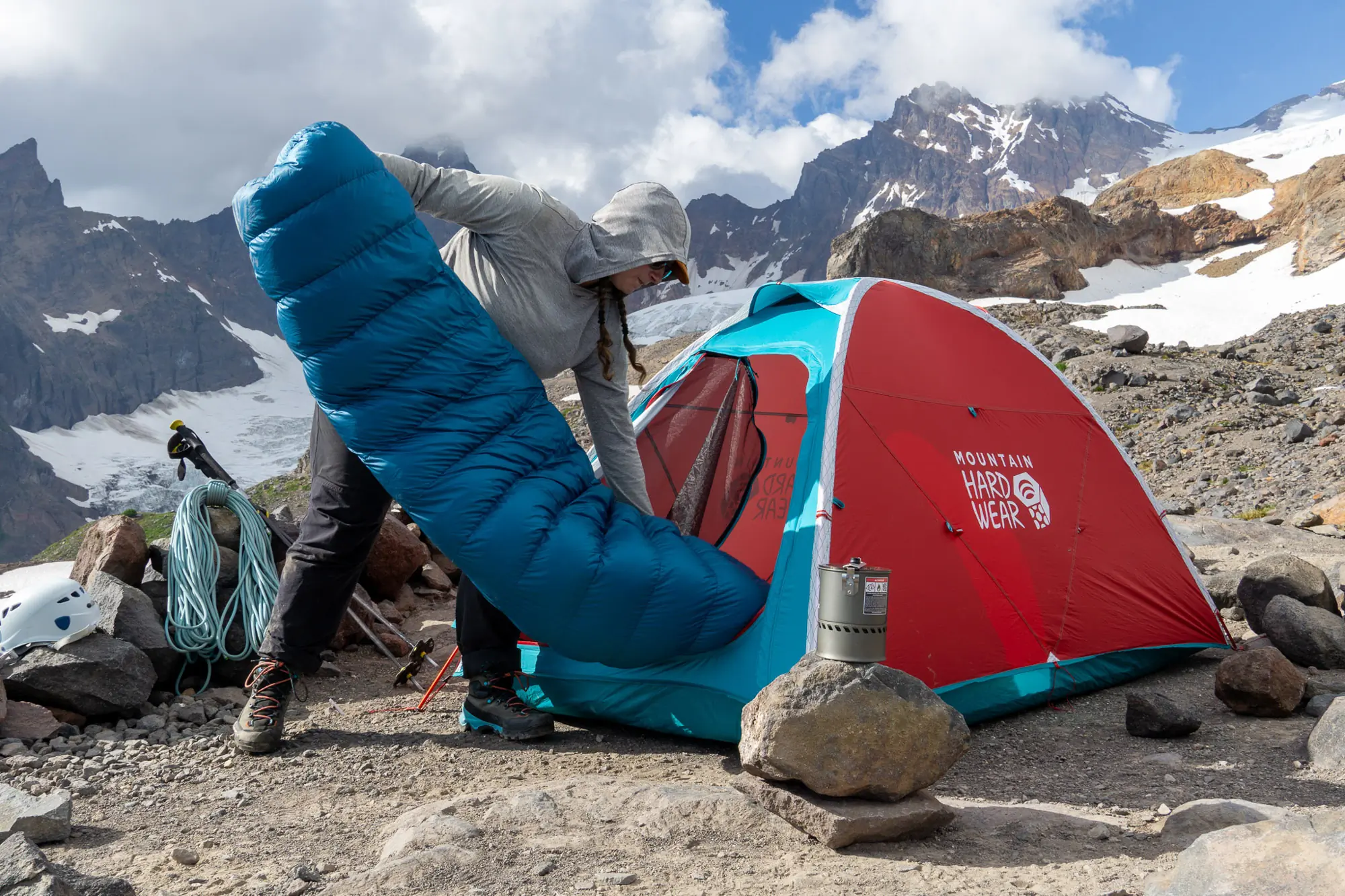
How We Tested the Best Backpacking Sleeping Bags
- Field testing: When we’re testing out in the field, we’re thinking about how comfortable the bag is, whether there are any cold spots, the ease of getting in and out, how durable the fabric is, whether the sizing is appropriate, and sometimes, whether we like the color scheme or not.
- Temperature and humidity logging: We also log data using hygrometers, comparing temperature and relative humidity with instruments placed both inside and outside our sleeping bags in real-world backcountry scenarios. This allows us to gauge whether ISO/EN ratings are accurate and provides us with the data to compare the performance of bags with the same temperature ratings in head-to-head matchups.
- Packability challenge: Using a cylindrical compression sack, a ruler, 20-pound weights, and a piece of wood, we can also maximize the compression of each sleeping bag to determine its peak packability.
- Moisture-resistance testing: Our third protocol involves a moisture-resistance test using both a cup of water and a sprayer bottle, assessing how a sleeping bag performs under both a theoretical downpour and misting conditions. After pouring the cup of water and using a different area to apply three mists, we note our observations over the course of 1 to 3 minutes.
- Our backpacking sleeping bag rating system:
- Warmth to Weight: The warmth of your sleeping bag is one of the most important factors we measure, and through our temperature logging (and multiple testers), we obtain a fairly accurate idea of its relative temperature rating. We weigh this against the overall weight of the bag to get a refined idea of how efficiently the bag retains your hard-earned body heat.
- Comfort: A sleeping bag shouldn’t just be a warm tube; we look for the softness of the internal fabric, the design of the hood and draft collars, and the overall cut of the bag when rating comfort.
- Material Durability: Shell and lining materials must be durable enough to withstand an entire summer of use to receive a high rating. Higher-quality down will retain its loft longer and earn a higher score. We also look for the longevity of the zipper, as it’s the single moving part on a sleeping bag.
- Feature Set: When rating a sleeping bag on its feature set, we look for components such as draft collars, easy-to-use cinch cord systems, snag-free zipper sliders, internal pockets, and enlarged footboxes.
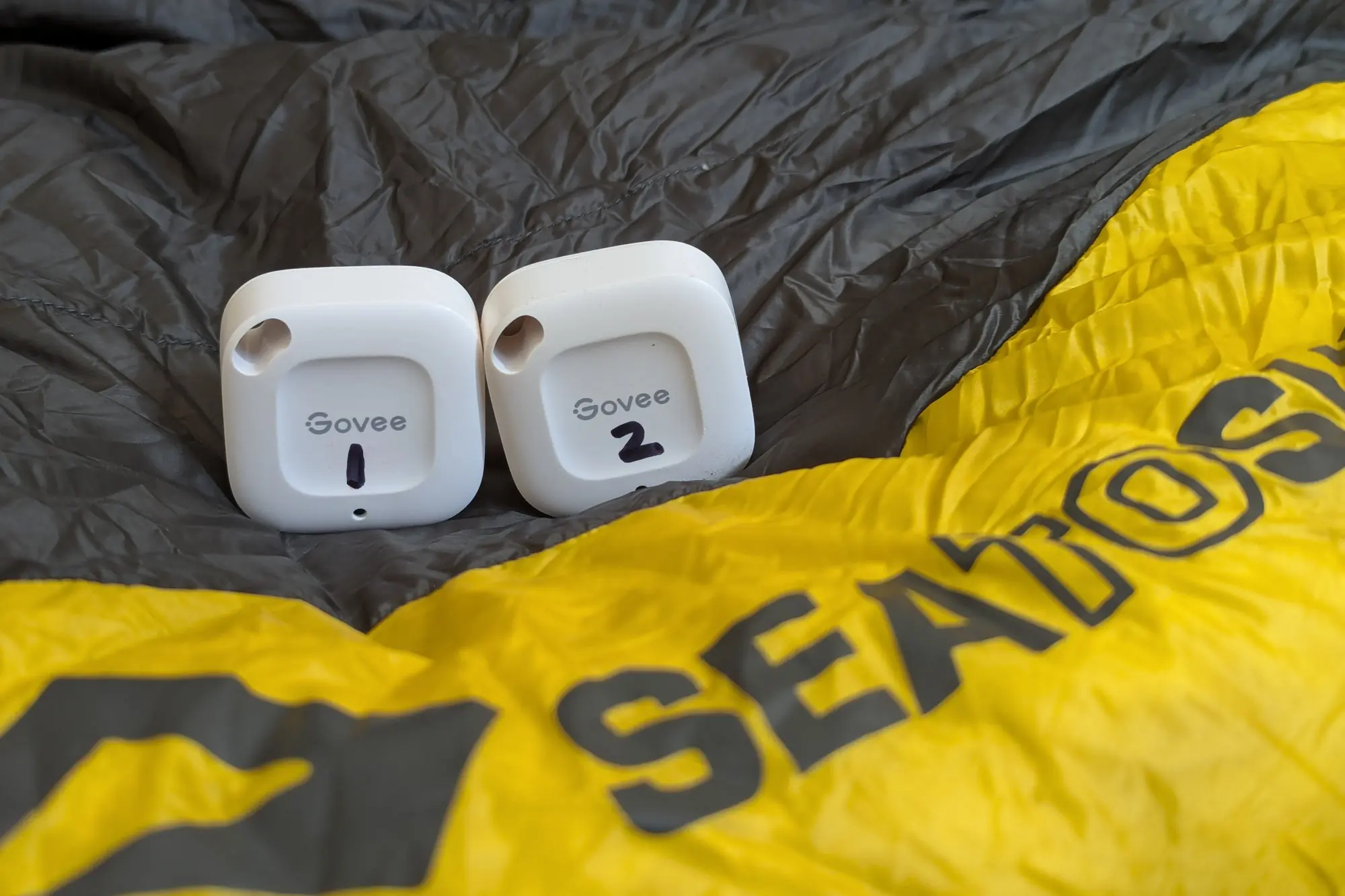



Our Testing Grounds
The main pillars of our backpacking sleeping bag test are — you guessed it — backpacking and sleeping. The location, trip type, distances covered, and conditions are always different, however, and we aimed to use these bags as they should: rainstorms included.
We’ve slept in these sleeping bags at some wild places across the way. From late autumn traverses in the Chugach Range to spring melt tromping in the Sierra, thru-hiking the Continental Divide and Pacific Crest Trails, and hiding from storms in Iceland — we’ve gotten around in the testing process.
Our Expert Testers
Editor-in-Chief Adam Ruggiero, a seasoned hiker, bikepacker, and all-around outdoorsman, broke trail with this guide in May 2020, wrangling together our initial selection of 11 top-shelf sleeping bags.
Tester Chris Carter took over the reins in 2022 and has been poring through online catalogs, bugging the pros, and hustling to gear shows to narrow in on the most current, deserving selection possible. Chris has significant experience cocooning himself in down burritos, having thru-hiked the Triple Crown of long trails in the United States: the Pacific Crest Trail, the Continental Divide Trail, and the Appalachian Trail. He knows the importance of a sound night of sleep on a backpacking excursion and doesn’t skimp on any element of his sleeping kit.
Senior Editor Nick Belcaster rounds out our sleeping bag testing team, and between trips to Patagonia to trek into remote glaciers and granite spires and flying deep into the Brooks Range of Alaska for a packraft expedition, he finds some time to get some shuteye. Nick has also hiked the Pacific Crest Trail, and living in Washington State allows him many nights under the stars to test these bags. Our current bench testing regimen is managed by Nick, where all bags we test are measured up side-by-side to get the real deal before live-fire testing.


Buyer’s Guide: How to Choose a Sleeping Bag
We utilize five factors to consider when purchasing a sleeping bag: warmth, packed size and weight, materials, extra features, and value. No one bag can excel in all categories without costing you a fortune. Our goal is to direct you toward the perfect sleeping bag for your needs and your budget.
Insulation & Warmth
Warmth ratings are a great place to start when selecting a sleeping bag, but before we talk temperatures, a solid understanding of how a sleeping bag keeps you warm is in order. All sleeping bags use insulation, and the most commonly used insulation in backpacking bags is down.
Down Insulation
Made from the under plumage of ducks or geese, down is just about the best insulator found in nature, and it’s our overwhelming recommendation for backpacking sleeping bags. The benefits are multiple: Down is highly thermally efficient, lightweight, and compressible.
Down is available in different levels of quality, and is measured by both fill power and fill weight. The fill power of down relates to how lofty it is — the higher the loft, the more air space there is to trap heat in. You’ll most often see a range between 650 and 900 in backpacking bags, where 650-fill power bags like the Mountain Hardwear Bishop Pass offer more value, and 800+ fill bags like the Mountain Hardwear Phantom or REI Co-op Magma provide more warmth and packability, but at a price.
Fill weight is the other side of the equation and is needed to truly compare bags side by side. This is the total amount of down added to the bag, and it can tell you a lot about relative warmth. For example, the 30-degree REI Magma and Sea to Summit Spark 30 both use 850-fill power down, but the Magma uses 12.7 ounces, while the Spark only uses 9.3. Tested side by side, we agreed that the Magma feels warmer.
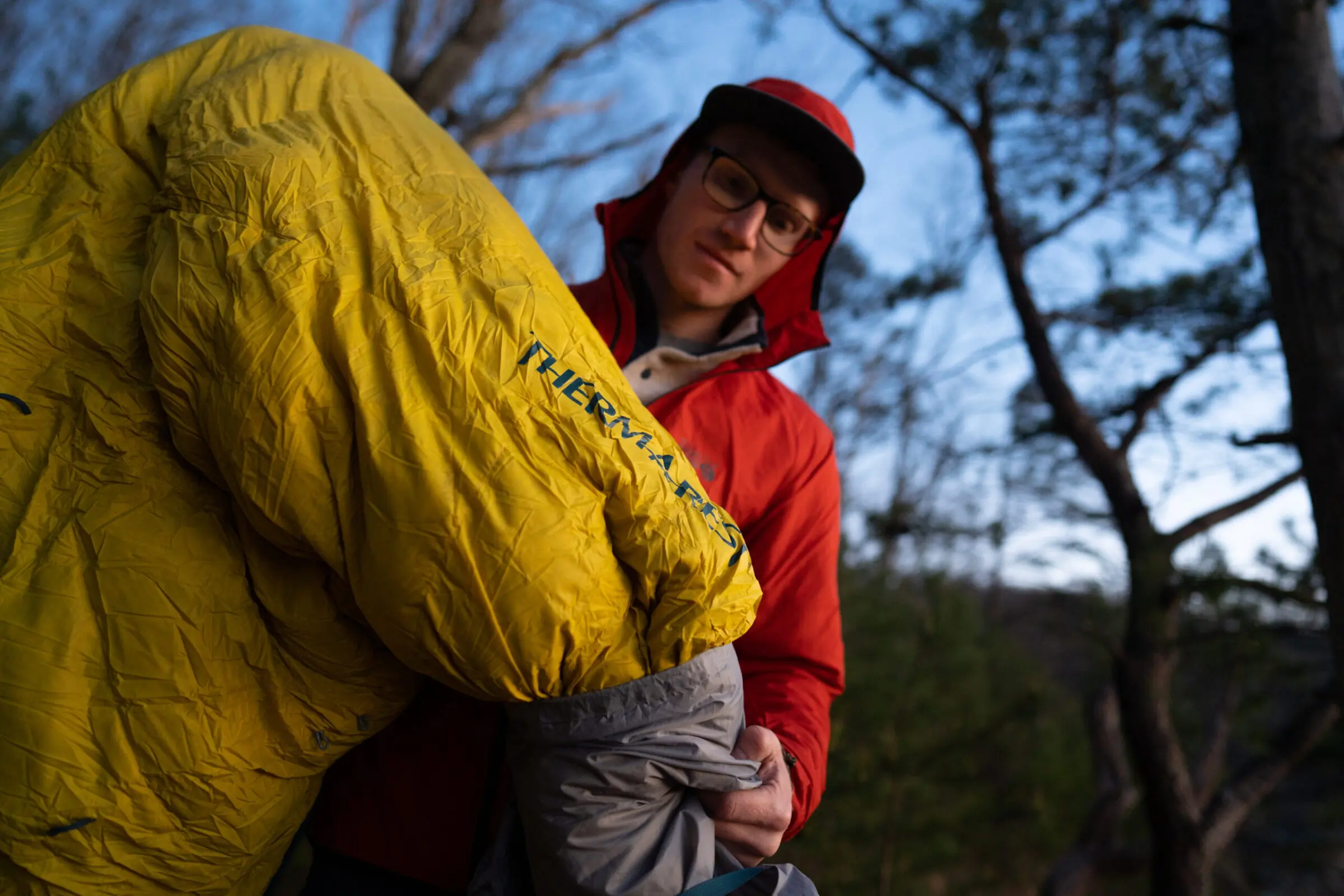



Synthetic Insulation
Synthetic insulations are less commonly used in backpacking bags, but offer a man-made alternative to down that can be both cheaper and more resistant to moisture. These polyester fibers trap and hold warmth like down, but won’t compress nearly as well, making it a better fill for front-country sleeping bags. Still, many budget bags use a synthetic fill, such as the REI Co-op Trailmade 20, and come in significantly cheaper than even the cheapest down bags, like the $170 Kelty Cosmic Down.
Temperature Ratings
All sleeping bags come rated for a certain temperature, but there’s some nuance behind that number to consider. The quick and dirty is this: the temperature rating of your sleeping bag is likely the ‘comfort’ rating, which is the temperature at which the average sleeper will sleep soundly through the night, so long as they are using an adequate sleeping pad and wearing base layers.
The ‘lower limit’ rating of a sleeping bag is often about 10 degrees cooler than this number, and that’s the temperature at which you’ll start to notice the chill creeping in, which might wake you up late at night. Many bag manufacturers have sleeping bags tested by an accredited organization, such as the International Standards Organization, which provides a standard to measure bags against each other.
- 20-30 degrees F: This is an all-around sleeping bag rating for most hikers. Its versatility allows you to venture to higher elevations, but it is not so hot that you’ll need to fully unzip the bag on certain nights.
- 30-50 degrees F: Summer-weight sleeping bags for warm evenings at lower elevations.
- 0-10 degrees F: Winter-weight sleeping bags for most of the lower 48.


Sleeping Bag Size & Shapes
After settling on the temperature rating and insulation type you want, you’ll need to choose the shape and size of the bag that’s right for you.
Mummy Bags
Snug and thermally efficient, mummy bags wrap you up and aim to trim down on dead air space that’s tough to keep warm. These shapes are cut slimmer compared to the boxy rectangles of camping bags and follow the contours of the body to reduce material bulk and weight. If you’re looking for a performance bag, this is the shape you’ll want, and options like the Therm-a-Rest Parsec, Mountain Hardwear Phantom, and REI Co-op Magma all fit the bill.
Semi-Rectangular Bags
For those who might find mummy bags a bit claustrophobic, semi-rectangular bags let in a bit more room for tossing and turning. This makes them ideal for a wider range of temperatures when pure warmth isn’t the only thing you’re after in a sleeping bag. These bags add room in the footbox, hips, and shoulders, and bags like NEMO’s spoon-shaped Disco are perfect go-betweens for a bag that can be used for backpacking and camping.
Sleeping Quilts
Quilt designs are specialty options. They aren’t just for those looking to carry the most minimal option, however. They’re also versatile at venting and can be even more comfortable for those who enjoy the freedom of movement in semi-rectangular bags. Quilts like the Katabatic Alsek 22 remove the back of the sleeping bag, where most of the insulation is doing little to warm you anyway, and incorporate pad attachments to integrate with your entire sleeping system.
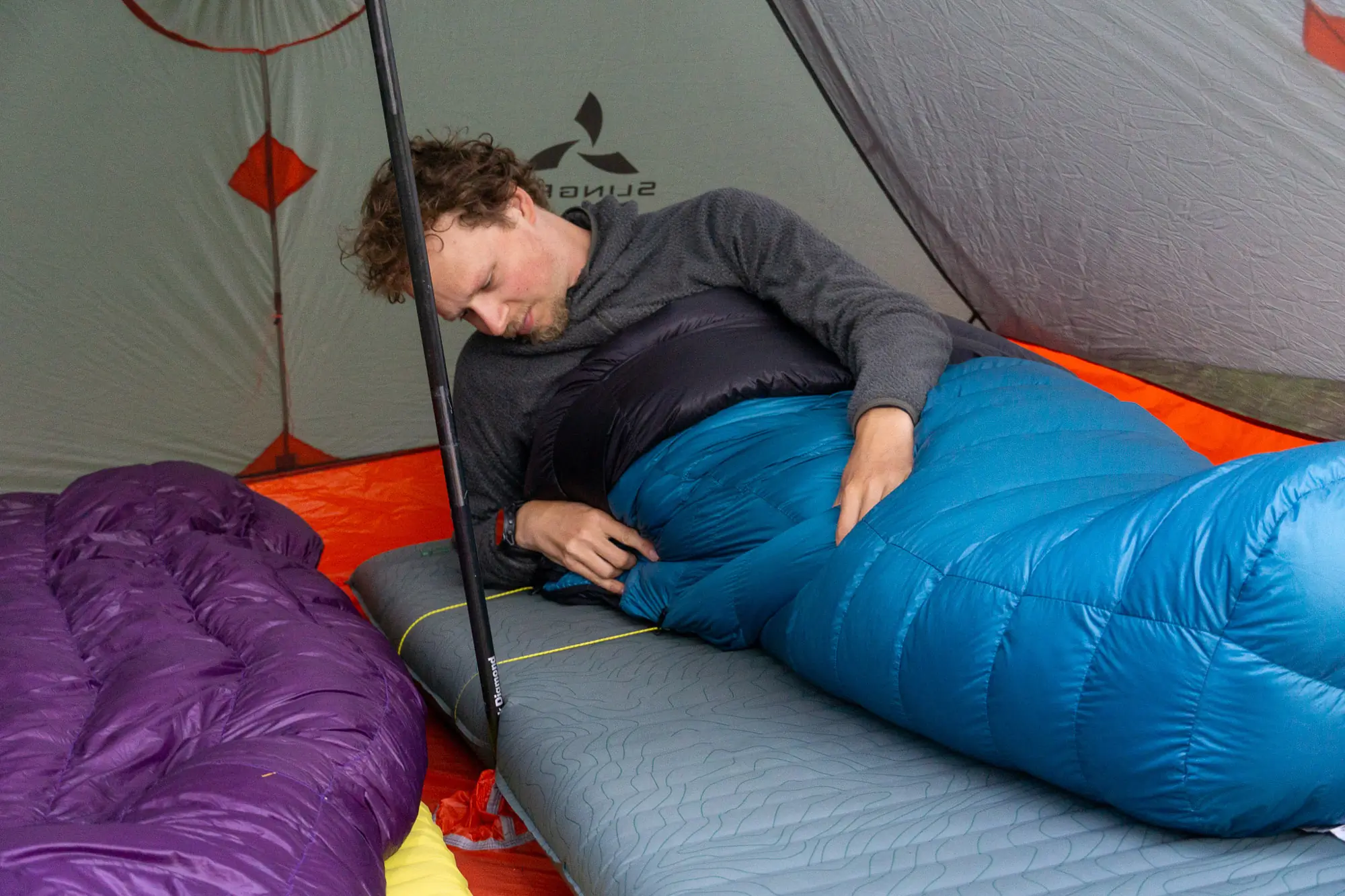



Shell & Lining Fabrics
Most sleeping bags use synthetic materials such as nylon or polyester for the shell, or exterior, of the sleeping bag. These materials repel water and hold warmth when wet. Either material works well and is frequently thinner on backpacking bags to keep weight and bulk down. 10-20 denier (the weight of the fabric) is common, with lighter fabrics needing a bit more care but cutting weight (and frequently costing more).
Nylon or polyester taffeta is among the most common fabrics used to line the inside of a bag. Unlike ripstop, which has a coarse feel, taffeta has a pleasant, silky feel and is more breathable. This makes it ideal as a next-to-skin fabric. Pay attention to the fabric behind the zipper as well. A late-night trip to the bush can cause fumbling and tearing of fabric if it gets caught in the zipper. Top brands will sew sturdier material in the zipper zone to prevent this, but it adds weight.
Baffles in a sleeping bag are sewn separations that keep the down in place to prevent it from bunching up. It is important to consider baffle size and placement in a down bag. After years of use, the feathers tend to migrate into clumps. A little care and proper maintenance can prevent this.


Hood & Draft Collars
The hood of your sleeping bag wraps your noggin and camp pillow, helping to trap the warmth that you’ve worked so hard for. These are often snug in backpacking sleeping bags and are aimed at being thermally efficient, with shock-corded adjustments that allow you to dial in the exposure you want.
Draft tubes and collars are insulation-stuffed barriers between you and places that lose a lot of heat. This is in places such as along the zipper or around your neck. These barriers are crucial to keeping cold air out. Draft collars rest on the chest and neck area to keep the heat in the bag from escaping.
Sleeping bags with lower ratings will typically incorporate larger draft collars, such as those seen in the Mountain Hardwear Phantom or Western Mountaineering AlpinLite, while warm-temperature bags may forgo them.


Zippers & Venting
Zippers are the closure system on backpacking sleeping bags. They function as both your entry point and add ventilation to your bag. Most bags will sport one full-length zipper on either side, with some brands offering the option to choose between a right-hand or left-hand zipper. Zippers with a second slider at the foot end allow you to ventilate your feet at night, and better modulate your temperature.
Some bags, like the NEMO Disco, go a step further and incorporate zippers into their venting system. The ‘Thermo Gill’ vents on this bag won high praise from our testers for truly pushing out excess heat. The Feathered Friends Flicker UL Quilt is also unique in that it adds a full-length zipper to a quilt design, allowing the Flicker to be used like a blanket on warm nights.
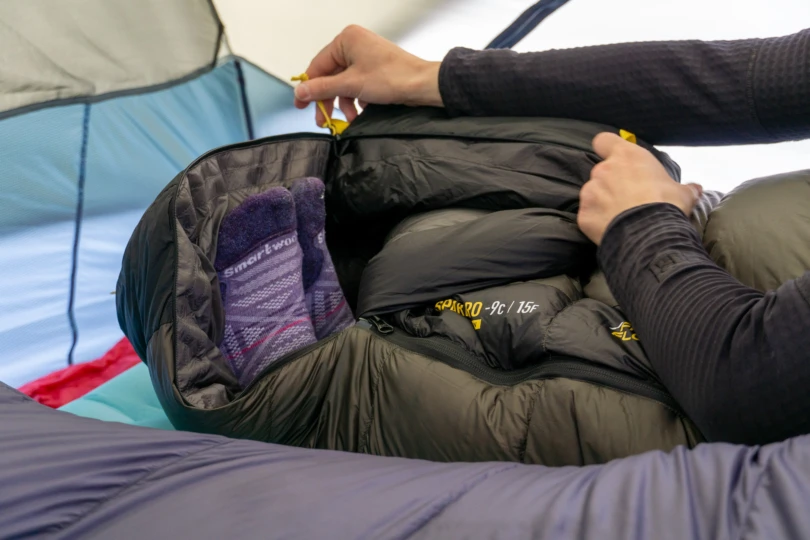



Packed Size & Weight
Packed size is of particular importance when backpacking. While regular camping sleeping bags focus more on comfort, you want your backpacking sleeping bag to have an appropriate warmth-to-weight ratio for your adventure. The weight and packed size of a bag are directly tied to the materials it is built from. Down always packs smaller than synthetic insulation at the same temperature rating but is, on average, more expensive.
Anyone looking to minimize pack weight should consider something like the REI Co-op Magma. This bag packs down to 3 liters and weighs just 2 pounds, 3.6 ounces. Compare that to the NEMO Forte with synthetic insulation which is much bulkier at over 3 pounds with a similar temperature rating.
The ability to pack your bag into the smallest stuff sack possible means more room for gear (or snacks!). The Katabatic Alsek 22 Quilt is insanely compact and is great for warm summer bivvies when you want to be ultralight or to add to another bag to multiply the warmth. It’s a good idea to consider the volume and storage capabilities of the backpacking backpack you plan to use on your excursions before choosing your sleeping bag, as this will be one of the bulkier items in your kit.


Women’s-Specific Sleeping Bags
Some sleeping bags, such as the NEMO Disco, are designed with women in mind and have features that some may find beneficial. As mentioned above, women’s bags are usually more spacious, accommodate wider hips, and have extra insulation (often in specific areas).
Some sleeping bags have a women’s-specific version that you can choose (which sometimes just means it’s shorter), while other models are designed solely for women. Sometimes the changes make a noticeable difference for women, other times a men’s or unisex model will work just fine.
In recent years, a move away from gendered styles and toward a larger range of sizes has become common, with the REI Co-op paving the way. The Magma series of bags eschews gendered options and instead offers nine different versions with three different lengths and widths to combine.
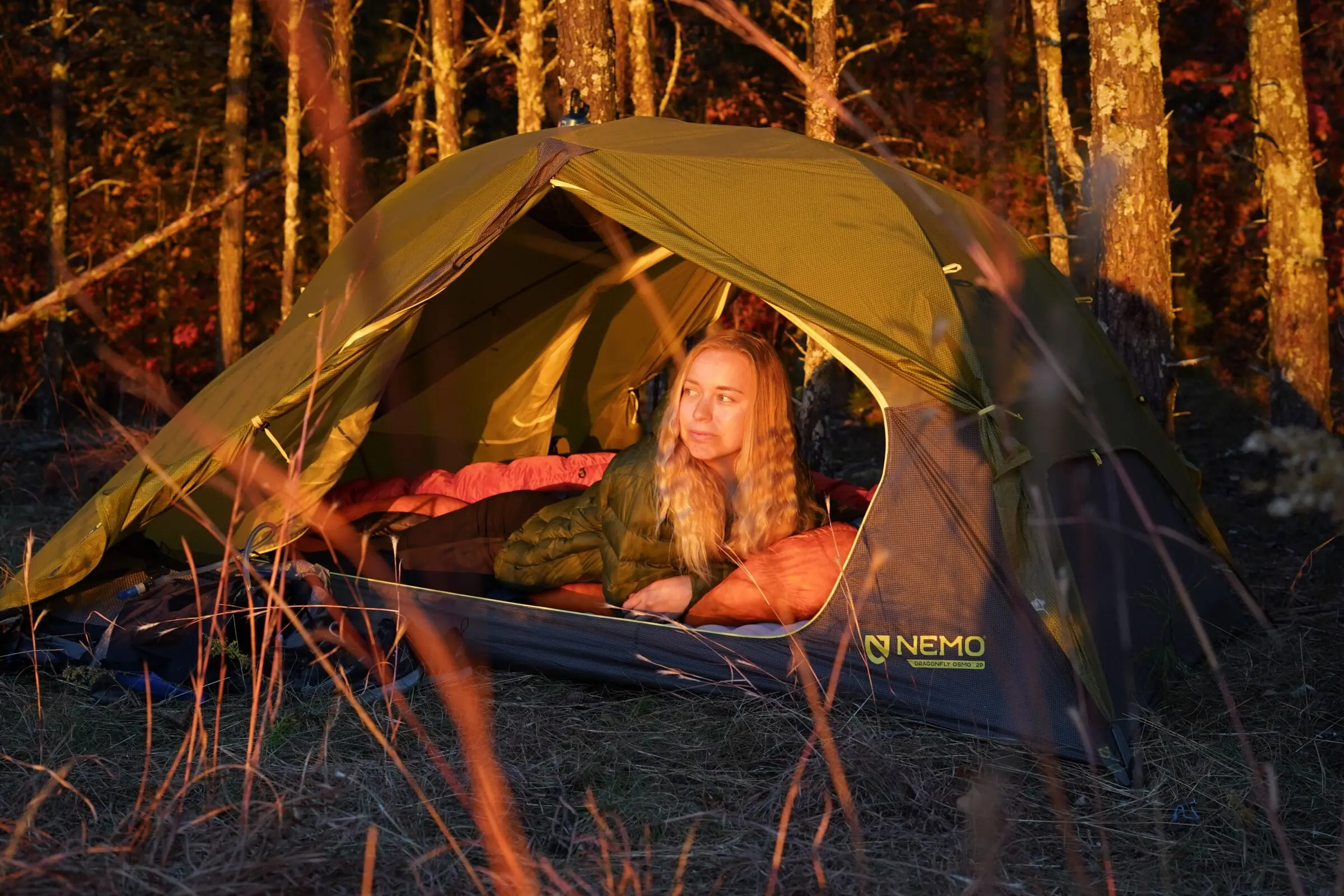



Price & Value
Buying a quality sleeping bag is as important as buying a good backpacking tent. It is not only a matter of comfort but also of safety and well-being. Your sleeping bag is a crucial piece of gear to give you the night’s rest you need to tackle your goals and enjoy the backcountry. You should expect to make a substantial investment in a long-lasting, high-quality sleeping bag. Don’t be surprised to see price tags that approach (or exceed) $500.
Budget
Still, there can be excellent reasons for going with a less expensive sleeping bag, and there are plenty out there to choose from. These bags are often synthetic-filled, and while our recommendations mostly focus on down bags, you can save a good amount by going with one of these. Also, expect to see lighter-duty taffeta fabrics used, zippers that lack a slider shed, and simple horizontal baffles. Expect to pay between $150 and $300 for a bag like this.
Down bags will use a lower fill-power insulation, and may be a blend of goose and duck down. Our choice for beginner backpackers, the Kelty Cosmic Down 20 ($150-170) is one of the best deals on a down bag currently and uses 550-fill down. Spending a bit more on something like the Mountain Hardwear Bishop Pass 15 ($305-325) will get you a better 650-fill down, as well as a nicer ripstop nylon shell.
Mid-Tier
Spending a bit more can often get you a warmer and more tailored sleeping bag. Between $300 and $500, you’ll see bags with nicer and more compressible 650-750-fill power down, high-quality ripstop and Pertex shell fabrics, and dual zipper sliders with covers to avoid snags. These bags will also generally fit better, with additional sizes and zipper options available.
The Therm-a-Rest Parsec 20 ($440-500) is a great all-around sleeping bag, and the 800-fill power hydrophobic down is nicer than some in this price range. Some bags are a bit more on the camp side, like the NEMO Disco ($300-330), while others are a bit more specialized, like the Enlightened Equipment Enigma ($355).
Premium
Premium bags are often from smaller boutique manufacturers, who can provide high-quality sleeping bags by charging more for exceptional quality. Brands like Western Mountaineering and Feathered Friends are USA-made companies that hand-craft their bags, use high-end materials like Pertex shells and 800-950 fill power-downs, and implement novel designs like trapezoidal baffles and 3D foot boxes.
The Feathered Friends Swallow UL ($659) and Western Mountaineering AlpinLite 20 ($670-715) are certainly some of the nicest bags we’d recommend, but you can also get into a more use-specific bag, like the alpinist-approved Mountain Hardwear Phantom 0 ($670-810).


Frequently Asked Questions
The decision primarily is a question of insulation types. Two categories prevail: synthetic and down. Synthetic bags, like the NEMO Forte, are bulkier and overall heavier when compared to a down-filled bag at the same temperature rating. They also tend to be less expensive and stay warm when wet (unlike down).
Down-filled bags, like the Western Mountaineering AlpinLite, tend to cost more and be more delicate to abrasion and tearing as feathers can leak out, diminishing insulation. The advantage of down-filled bags is they pack extremely small and can provide more warmth with less material and therefore, less weight.


The short answer is more than you probably should. Compressing down feathers damages them over time but they can squeeze down magnificently.
We have compressed a -40-degree bag into a 10L compression sack. That is not recommended but if you need space in your pack, you will do whatever you have to.
Packing down takes patience. Applying gentle pressure to remove air from between the down can squeeze it into tight spaces. Check with your manufacturer’s listed pack size. This is a good indication of how far to take it.
For example, one of our favorite sleeping bags, the Western Mountaineering AlpinLite, has a 5L listed pack size in the regular length. Compare that to the NEMO Disco at 6.2 L at a comparable temperature rating.
When you store your down sleeping bag, always put it in the large provided sack or bag about the size of a 55-gallon trash bag to prolong the life of the down and allow for full expansion while in storage.


This is largely dependent on what your needs are. For backpacking, long hikes into a campsite with just a backpack to haul your gear, the general consensus is that you will want a pack under 3 pounds.
Ultralight sleeping bags, like the Sea to Summit Spark line, are measured in ounces, not pounds. Yet, with every ounce you sacrifice, most often you’re losing material.
This can mean less durable materials, less size or comfort, and potentially higher prices with more advanced tech. For car camping, weight will really be a secondary concern to comfort — it’s more what will fit in the trunk of your car. In that scenario, the roomy NEMO Forte starts to look pretty appealing.
When it comes to warmth and packability, nothing beats down. That’s not to say that synthetic options aren’t warm or packable — or that someday synthetic insulation might catch up to or surpass down — but down is the hands-down winner for now. Consider the 20-degree Western Mountaineering AlpinLite that packs down to 5 Ls.
Synthetic bags do have their place, however. By its nature, synthetic is engineered to maintain its performance characteristics when it’s wet. The same cannot be said for down. While synthetic isn’t quite as packable, it has come a long way in becoming a pack-friendly option.


From our testing, the Western Mountaineering AlpinLite and Mountain Hardware Phantom are the lightest backpacking sleeping bags we recommend.
Warmth ratings are a guide, not a rule. The degree listed on a sleeping bag is a measure of a bag’s comfort zone. Typically, a 20-degree bag will keep the average user comfortable at 20 degrees, but we all regulate heat differently.
Many bags, such as the Sea to Summit Hamelin, incorporate multiple zippers to provide more ventilation. This allows the bottom of the zipper to be opened as a vent while most of the bag stays zipped shut.
If you run cold, a 20-degree bag may feel too cold in 30-degree temps. If you run hot, you can get away with a 30-degree bag in 15-degree weather or below. Keep this in mind if you run hot or cold on either end of the spectrum.
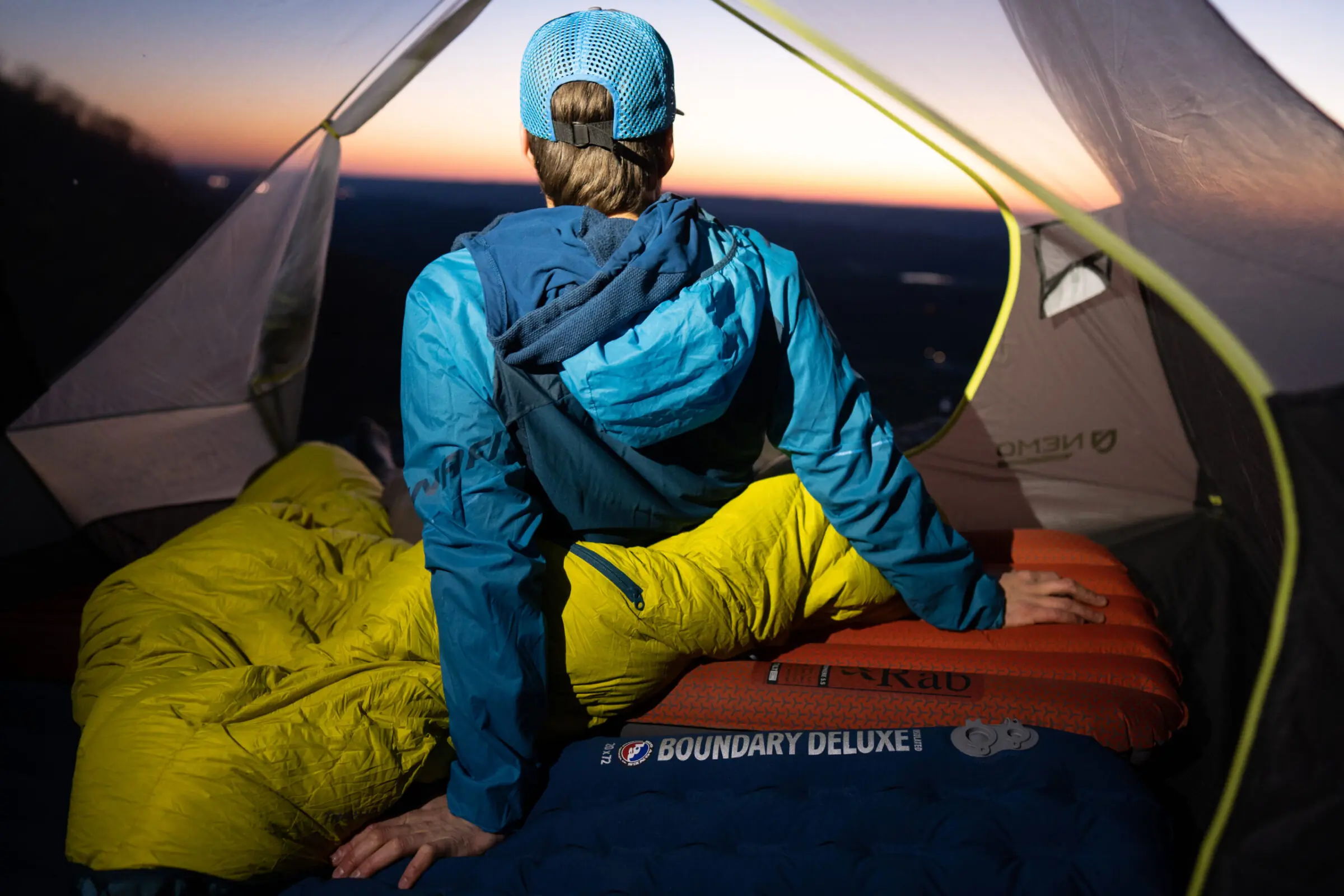





The Best Backpacking Sleeping Pads of 2026
We tested and reviewed the best sleeping pads for backpacking in 2025. Whether you need an ultralight mat or more insulation, we’ve got it.


The Best Backpacking Tents of 2026
Whether you’re looking to spend 100 nights on the trail or stick to a tight budget, we’ve found the best backpacking tents of 2025.
